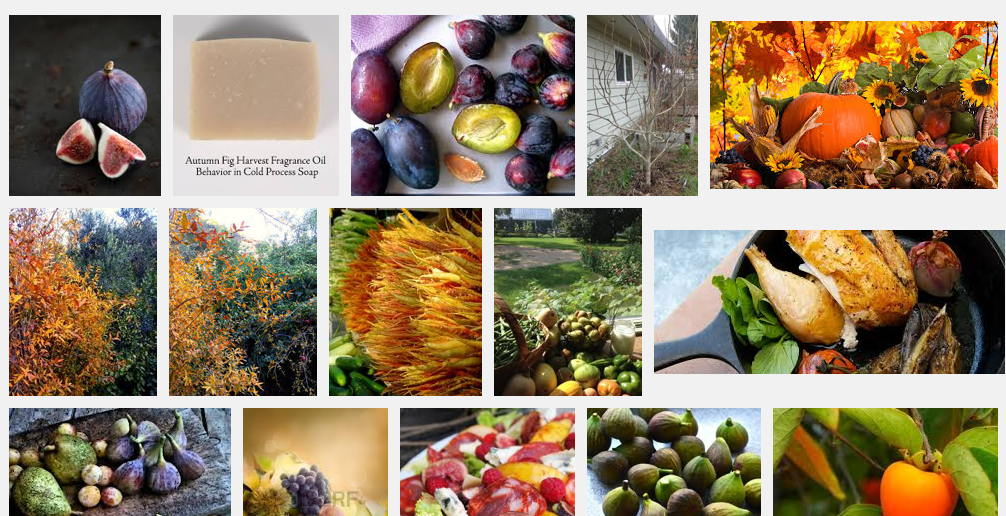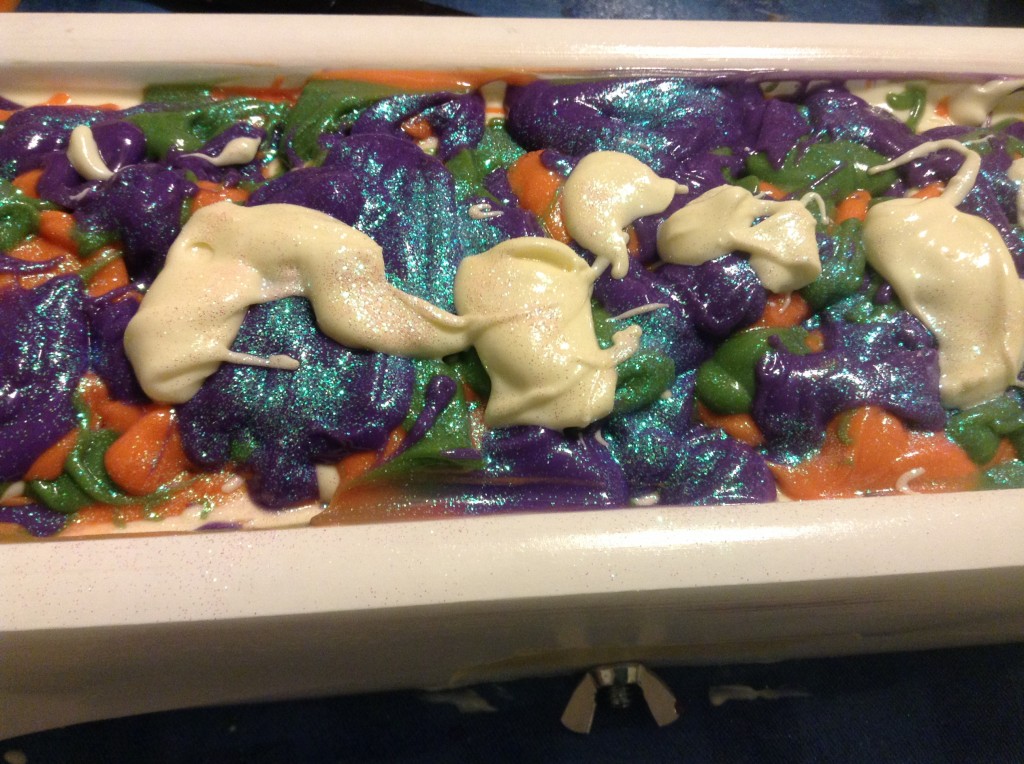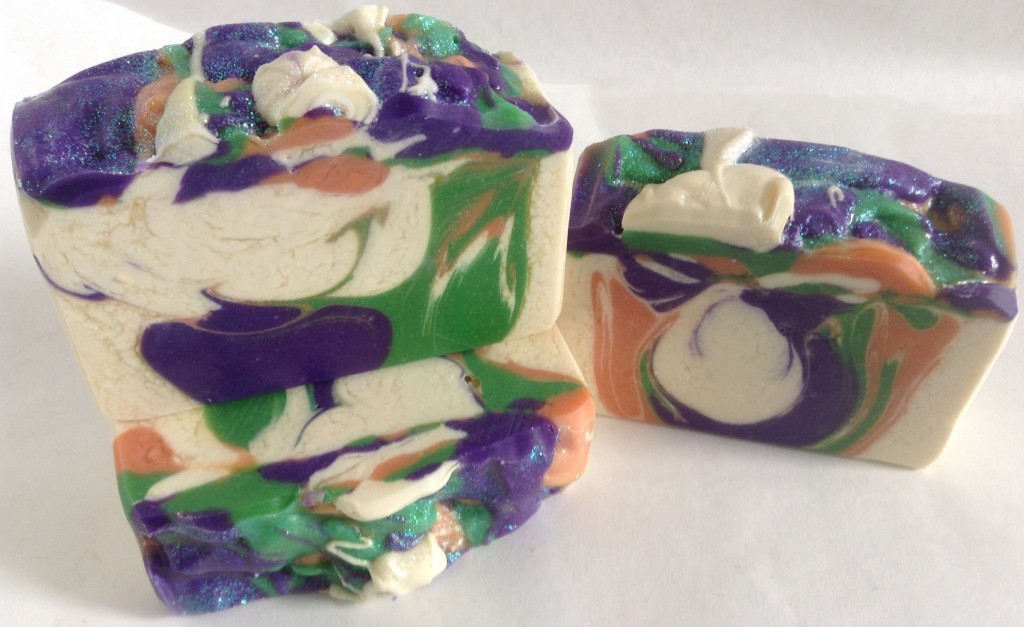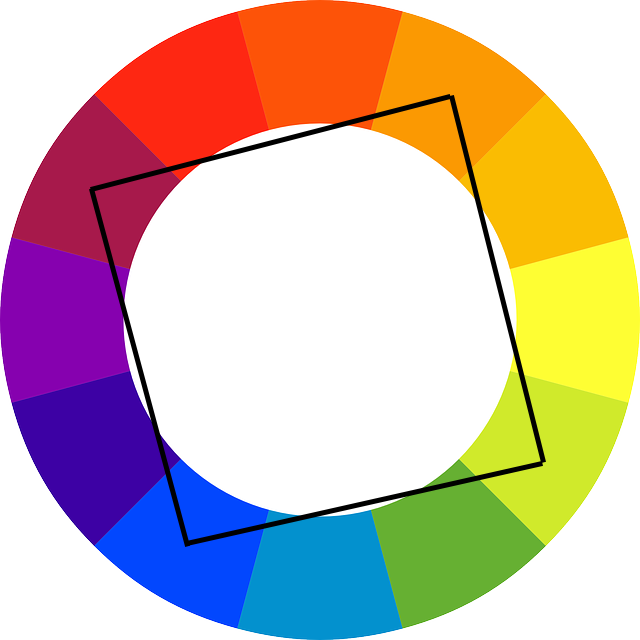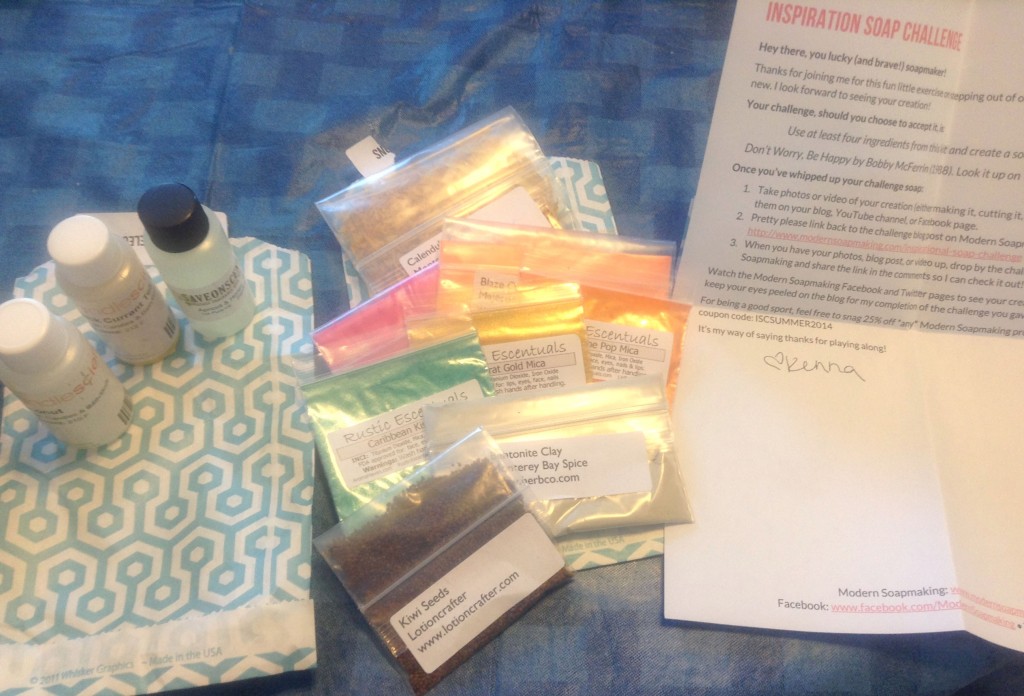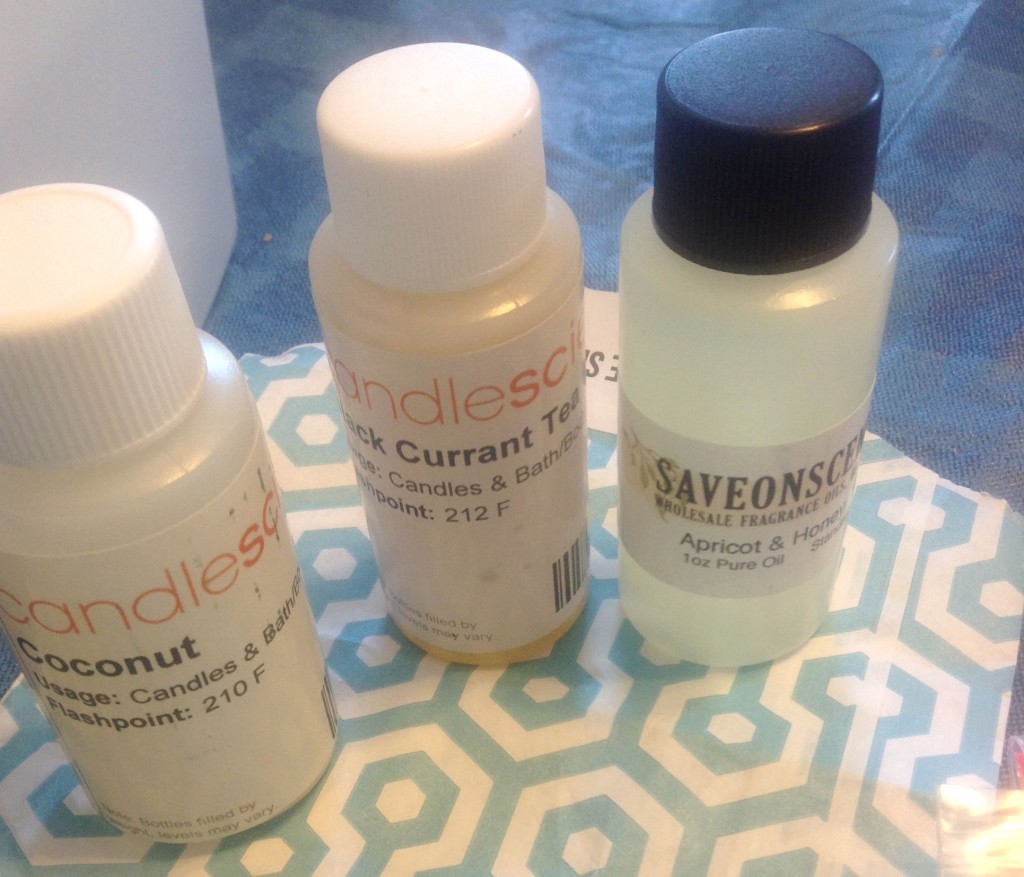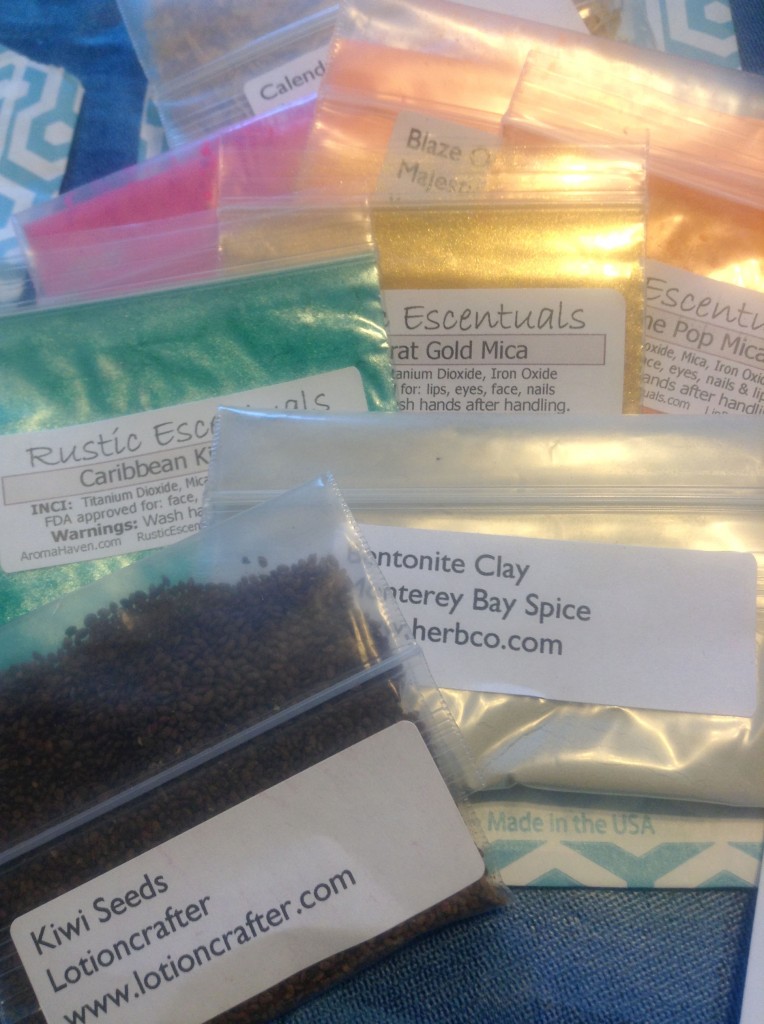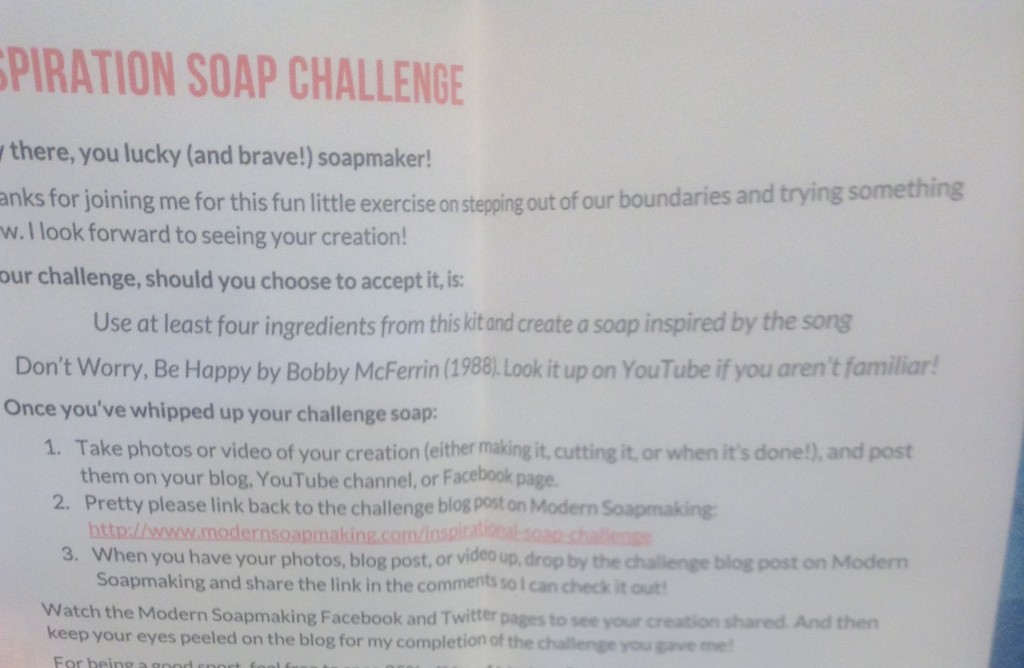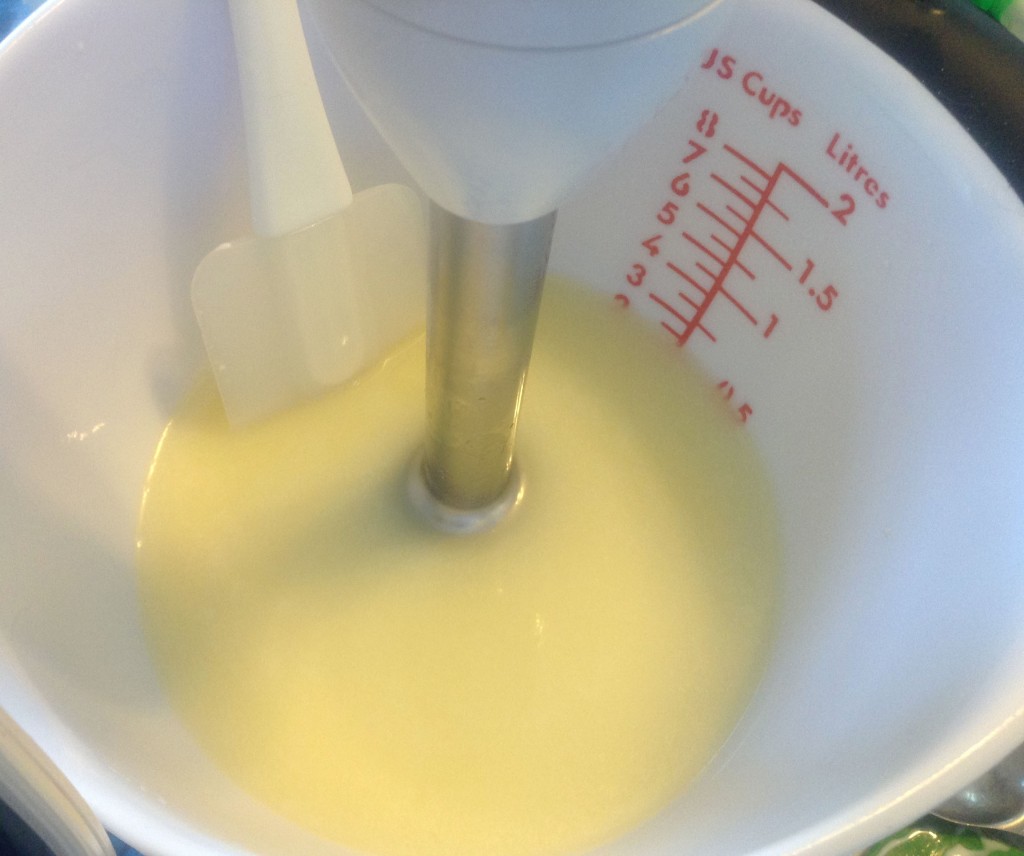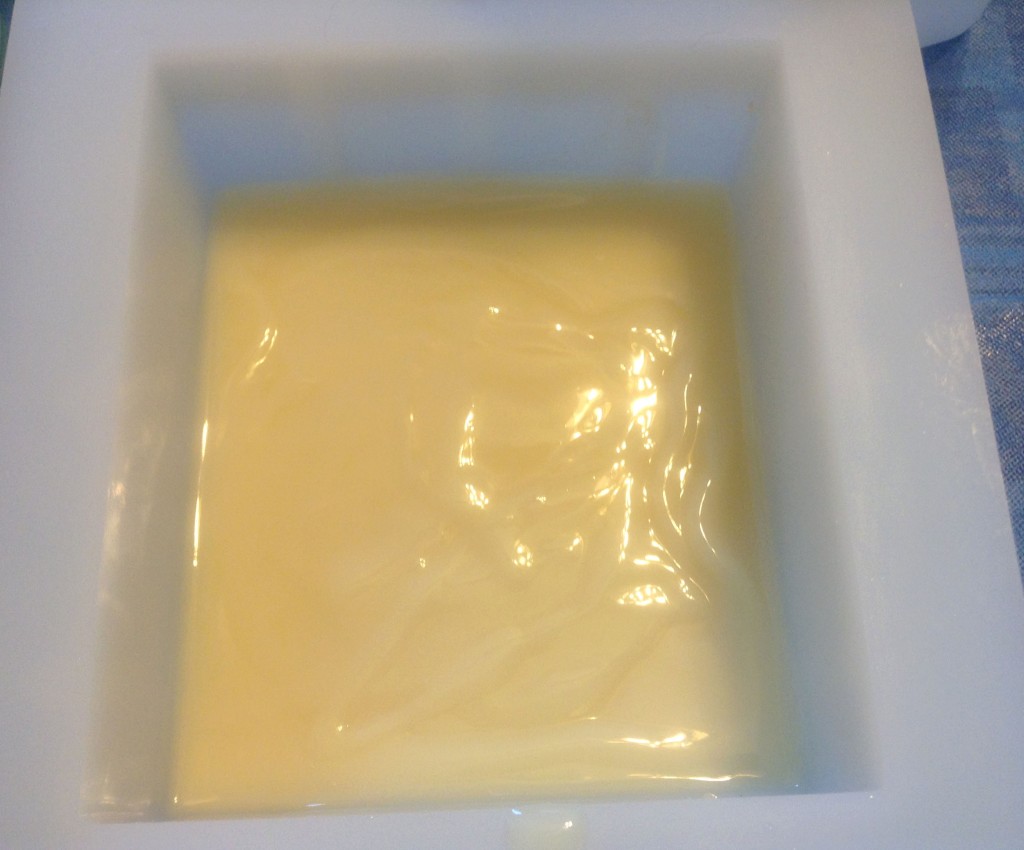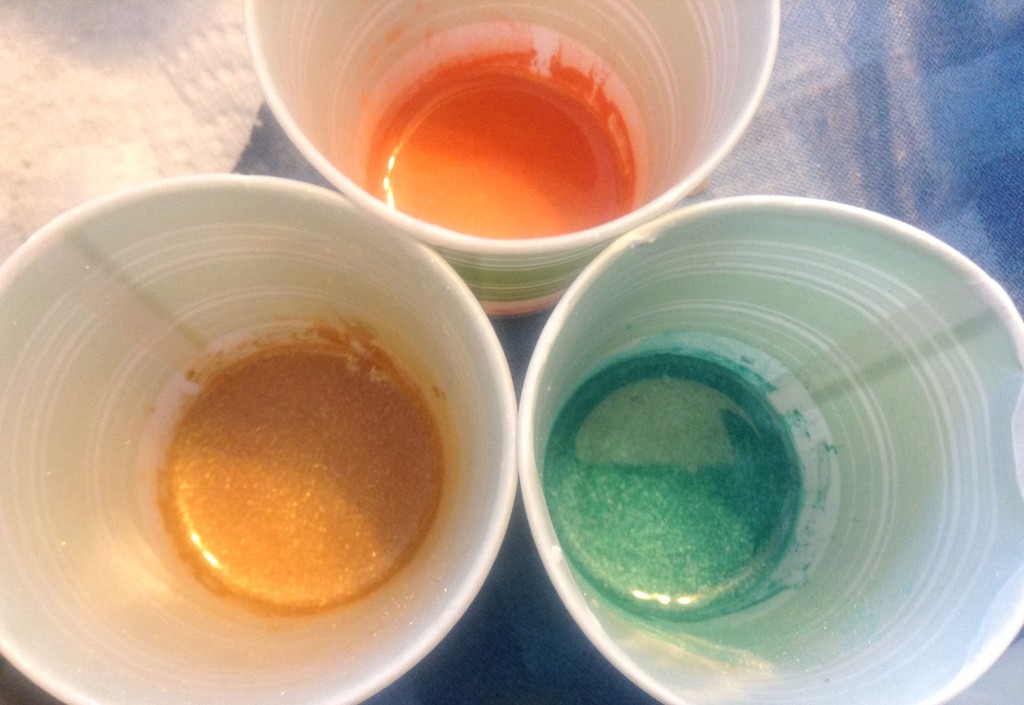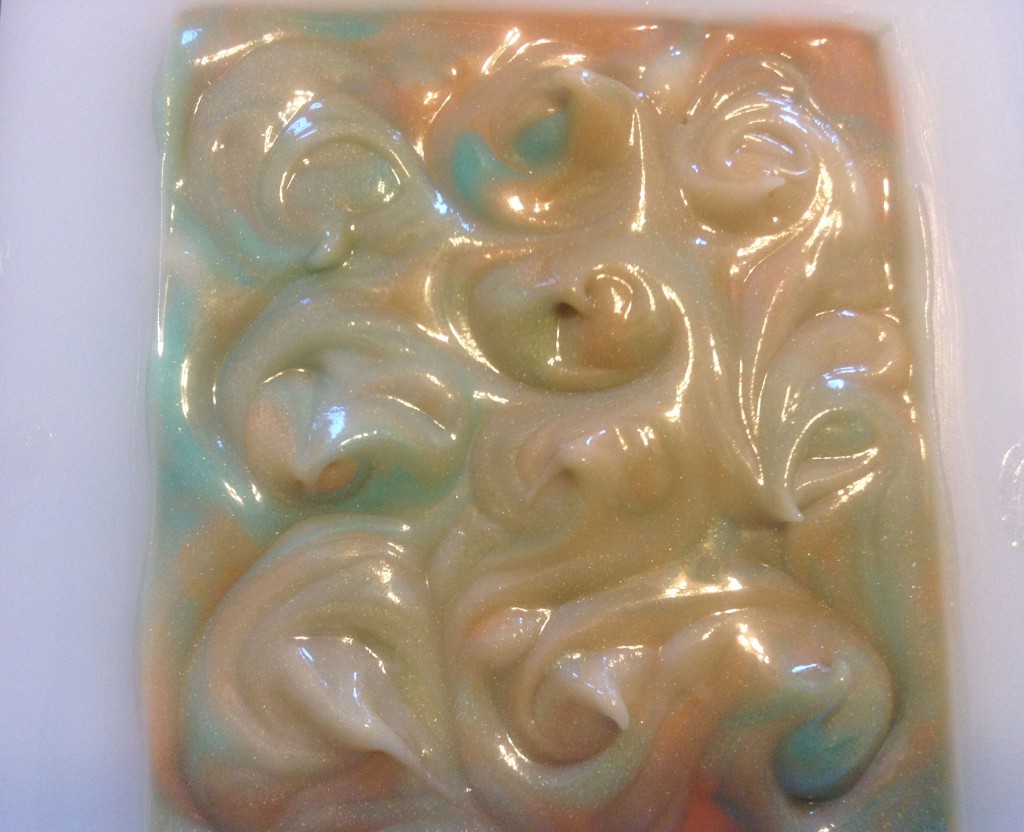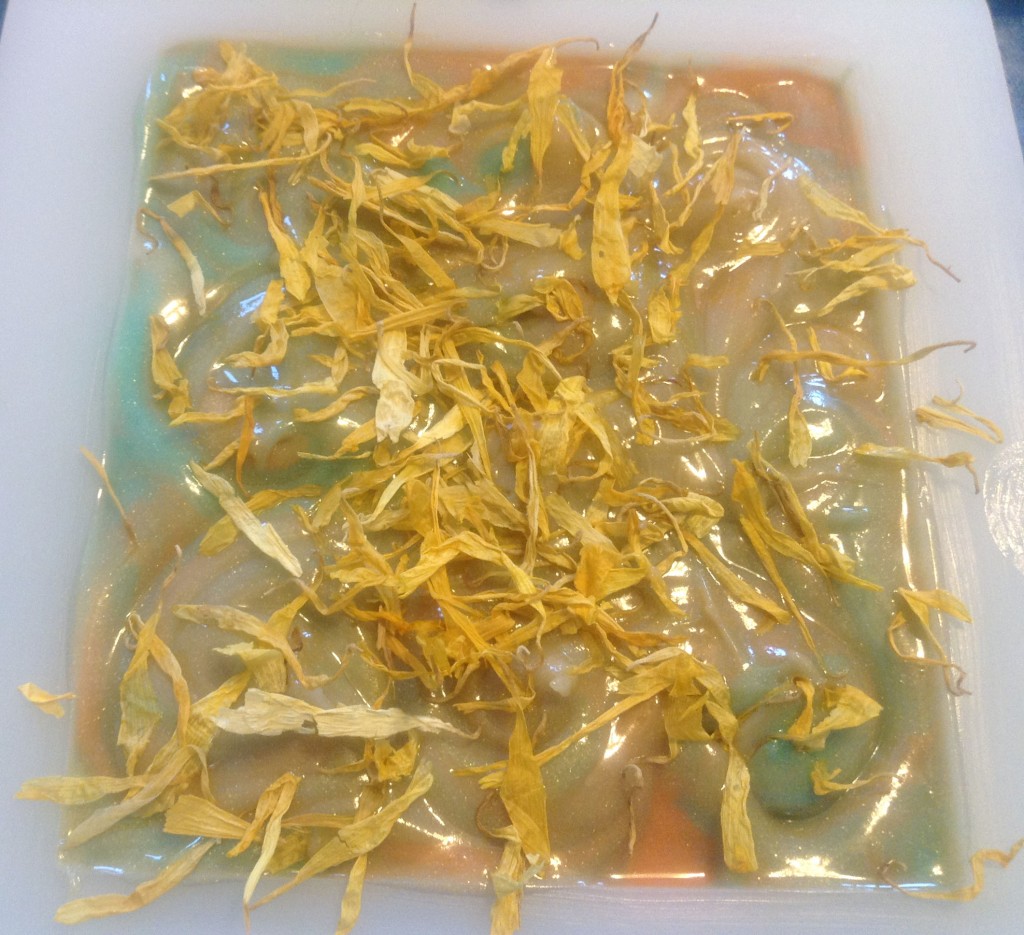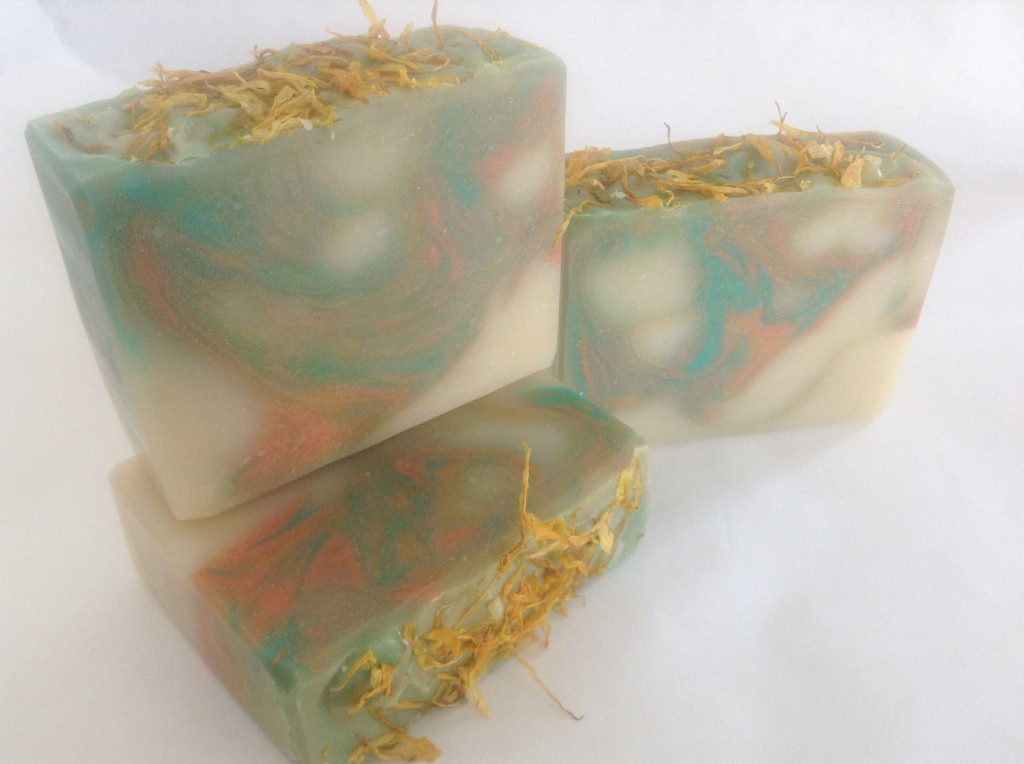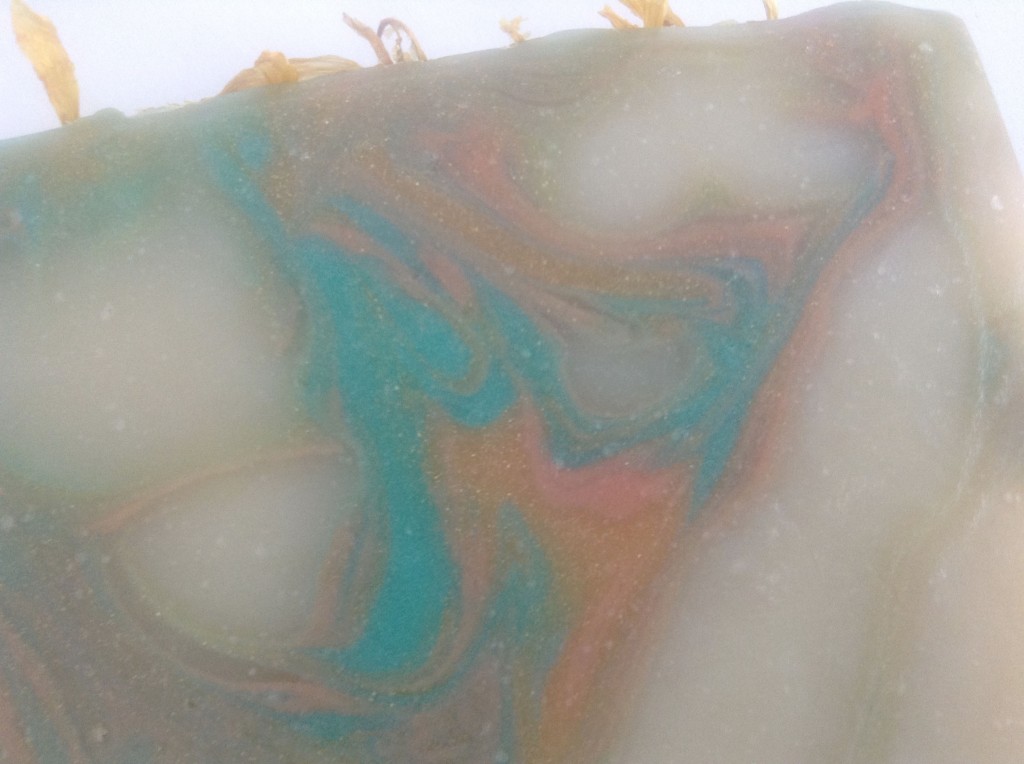Carrots are great for your skin. They contain beta-carotene, which is believed to relieve dry skin and reduce fine lines. Buttermilk is also great for dry skin and has alpha-hydroxy acid, thought to remove dead skin cells. Many beauty products on the market contain alpha-hydroxy acid.
I originally tried a carrot-based soap well over a year ago, and I wasn’t 100% happy with the results. It was a fine soap, and those who tried it even complimented me on it and said they loved it. It just didn’t look like it had carrots in it.
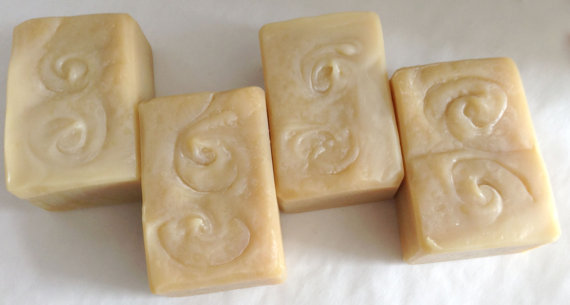
I made this soap based on a recipe I found at Soaping 101. To be honest, I think I combined the carrot soap recipe in the video with a facial soap recipe. I suspect it was another Soaping 101 recipe, but I am just not sure anymore where I found it. I do know I didn’t formulate the recipe, though I may have tweaked it. My recipe for this soap was as follows:
- 35% olive oil
- 30% palm oil
- 15% coconut oil
- 10% palm kernel oil
- 5% sunflower oil
- 5% castor oil
I used full water, which probably wasn’t necessary, and a superfat of 7% (I typically use 6%). I also added kaolin clay and powdered goat milk, and substituted 2 oz. of water for pureed carrots. I also used tussah silk, but I use tussah silk in a lot of my soaps. The recipe has a lot more palm oil and a lot less coconut oil than I typically use. I also used palm kernel oil, which I do not typically use and have actually discovered I don’t like much.
I was happy with how the soap looked in the mold.
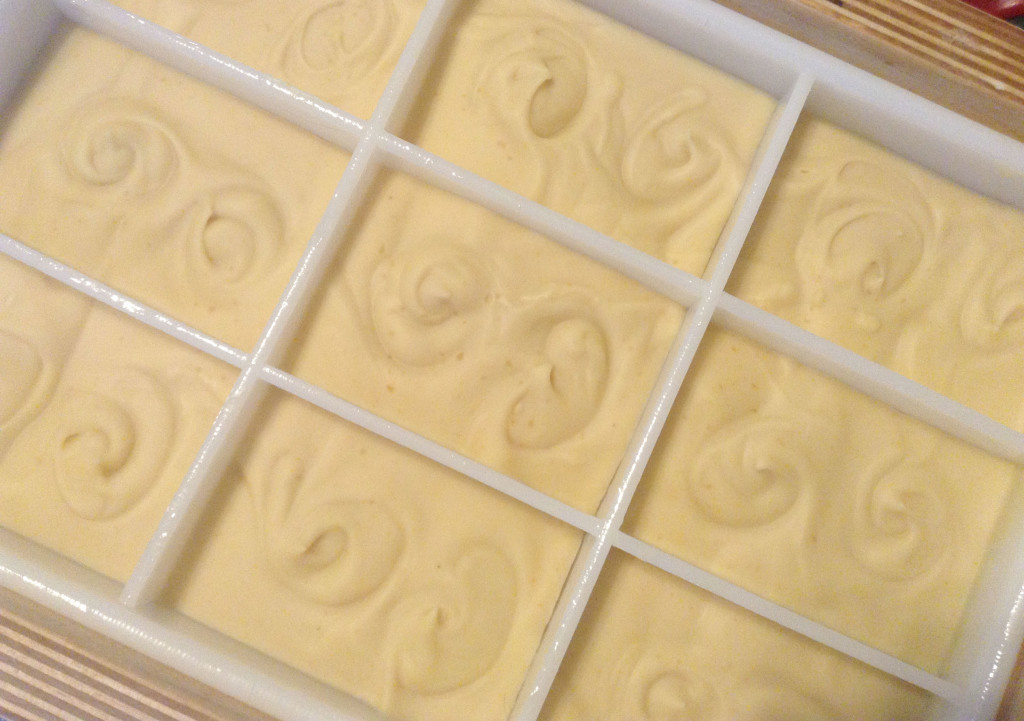
However, I noticed that it heated up rather a lot, and it began to look a little bit like brains. If you haven’t experienced this phenomenon in soapmaking, check it out and scroll to Alien Brains. The resulting soap, as I said, was fine. And it was hard as a rock. I just didn’t think it looked like I wanted. I was put off using carrots for a while.
I really liked the look of some other carrot soaps I had seen. For instance, Rocky Top Soap Shop has a beautiful carrot soap, and Chagrin Valley has a very nice Carrot and Honey soap. Both soaps contain carrot juice rather than pureed carrots.
I decided to try Amanda’s advice and use carrot baby food. After trying baby food, I am convinced the trick to a good carrot soap is to use pureed carrot baby food or carrot juice to replace some or all of the water instead of making your own carrot puree. It may be that when I pureed my own carrots, I was not using enough carrots as compared to water, and though I have a blender, I had trouble making a very fine puree like you might find in baby food. You have to be careful with using fruit or vegetable purees in soap. Sometimes, they go brown (strawberries, peaches). Other purees seem to be fine (bananas).
I searched for an organic baby food that listed its ingredients as only carrots or only carrots and water, and I found one. I discovered when I used the carrot baby food, the resulting color was much closer to what I was looking for.
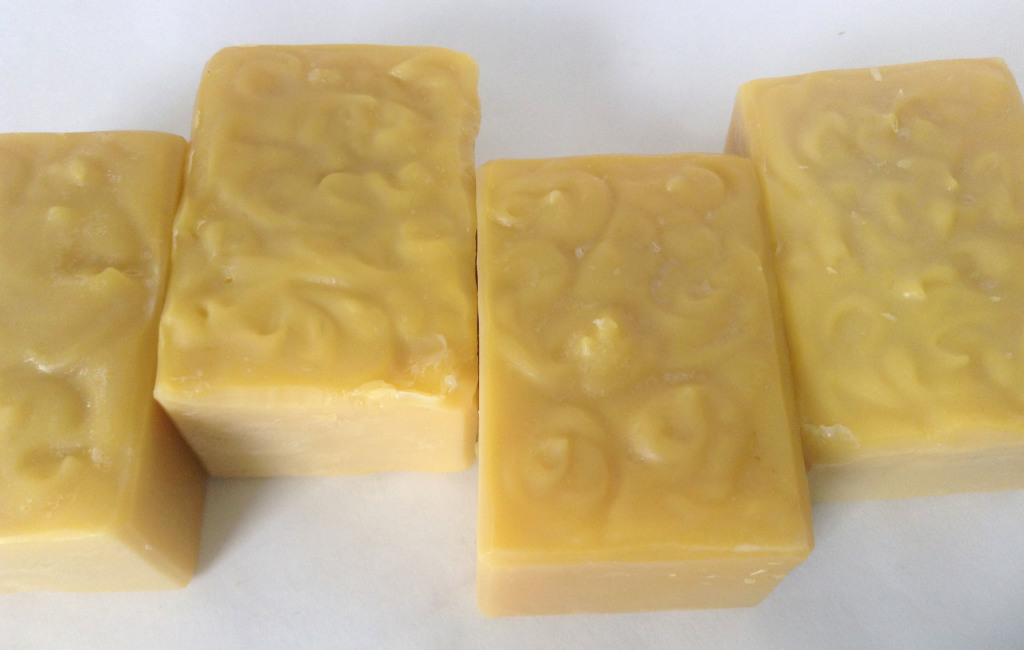 I completely scrapped my other recipe. I used two ounces of carrot baby food, removing two ounces of water from my recipe and reduced the total amount of liquid in the recipe from 38% (which SoapCalc figures as “full water”) to 33%. I superfatted at my usual 6%. As I said, I am not a fan of palm kernel oil, and I decided to simplify with fewer oils. I also used two teaspoons of powdered buttermilk, removing about a tablespoon of water from my recipe before adding the lye and using it to reconstitute the buttermilk. Buttermilk is just wonderful in soaps. I used two teaspoons of kaolin clay as well. I did not add the carrots to the lye water, as Amanda described, but rather to the oils. I blended the kaolin clay, reconstituted buttermilk, and carrots well with the oils before I added the lye water.
I completely scrapped my other recipe. I used two ounces of carrot baby food, removing two ounces of water from my recipe and reduced the total amount of liquid in the recipe from 38% (which SoapCalc figures as “full water”) to 33%. I superfatted at my usual 6%. As I said, I am not a fan of palm kernel oil, and I decided to simplify with fewer oils. I also used two teaspoons of powdered buttermilk, removing about a tablespoon of water from my recipe before adding the lye and using it to reconstitute the buttermilk. Buttermilk is just wonderful in soaps. I used two teaspoons of kaolin clay as well. I did not add the carrots to the lye water, as Amanda described, but rather to the oils. I blended the kaolin clay, reconstituted buttermilk, and carrots well with the oils before I added the lye water.
The recipe fit well in my 9-bar mold. I left the soap unscented as I intended it to be used on the face and/or sensitive skin. In my opinion, the new recipe, which I formulated myself, is much more face-friendly than the one I borrowed—there is an excellent case to be made for creating your own recipes instead of following others’ recipes right there. Nonetheless, here is what I used:
- 40% olive oil
- 25% coconut oil
- 25% palm oil
- 5% apricot kernel oil
- 5% castor oil
I had noticed that my old standby facial soap, Provence, which is a Marseilles-style soap made with olive oil, coconut oil, and palm oil, was making my face feel a little tight after I finished using it. I decided to pull out a bar of my Carrot Buttermilk soap to see how I liked it. I didn’t just like it, I LOVED it. It had a smooth, creamy lather that I didn’t expect to see because of the amount of coconut oil and castor oil I used, which usually produces a lather that is bubbly. Carrot Buttermilk will bubble up quite a bit more if you lather it up for a little longer. It actually feels like a soap that has more olive oil in it than it does (though it has a significant amount, and more than the Carrot Silk soap had). I suspect the difference is the apricot kernel oil. My face absolutely does NOT feel tight after I wash with it, and I am now in love with this little bar of Carrot Buttermilk soap.
You can purchase Carrot Buttermilk from the shop, and it’s even on sale for a limited time.

Carrot Buttermilk Facial Soap by Dana Huff is licensed under a Creative Commons Attribution-NonCommercial-NoDerivatives 4.0 International License.

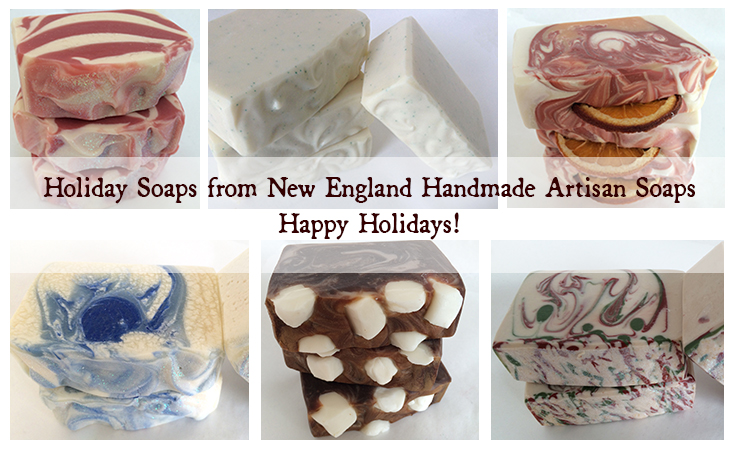 This weekend, you can support a small, woman-owned business and get a good deal on shipping. If you use the coupon code FREESHIP here in the
This weekend, you can support a small, woman-owned business and get a good deal on shipping. If you use the coupon code FREESHIP here in the 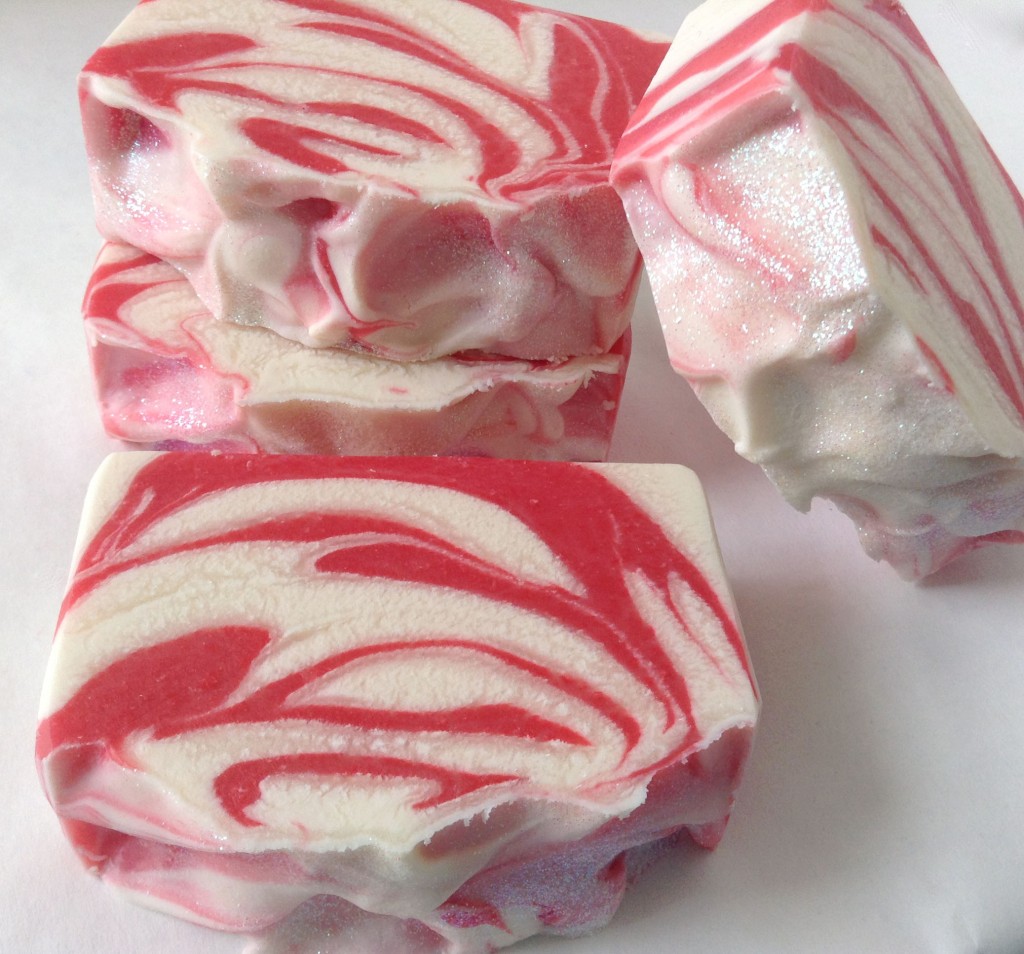
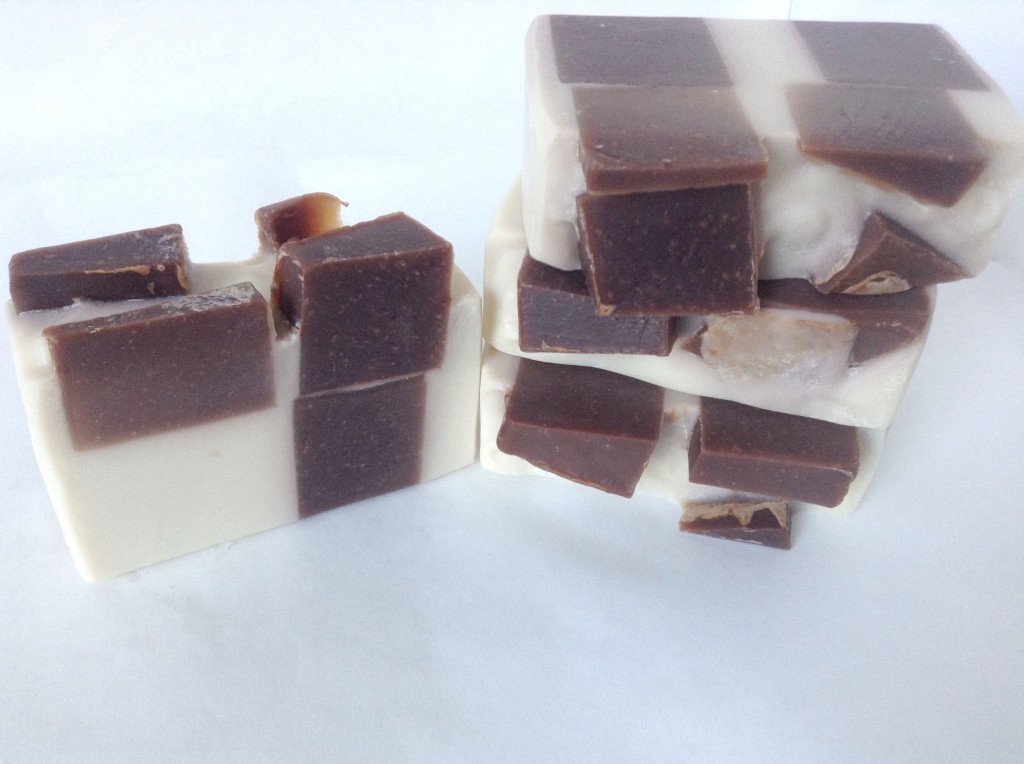
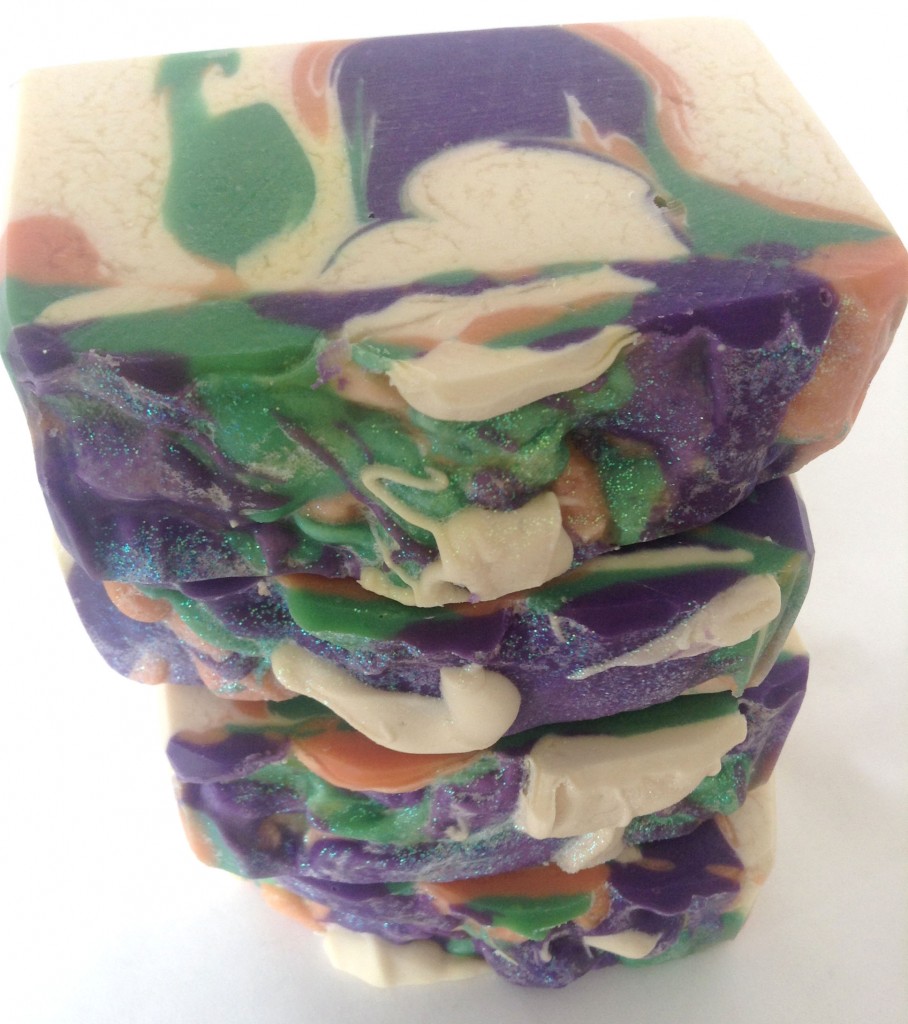 Autumn Fig Harvest became one of my favorites as soon as I made it. I love the spatter tops of these bars, and the fragrance is one of my favorites—top notes of bright and crisp apple, lemon and ginger with middle notes of fig, caramel, and cinnamon that lead to more earthy base notes of coffee, twigs, and wet forest. Ingredients: olive oil, water, coconut oil, sustainable palm oil, fragrance, shea butter, sweet almond oil, castor oil, cream, kaolin clay, colorants, tussah silk. Available September 13.
Autumn Fig Harvest became one of my favorites as soon as I made it. I love the spatter tops of these bars, and the fragrance is one of my favorites—top notes of bright and crisp apple, lemon and ginger with middle notes of fig, caramel, and cinnamon that lead to more earthy base notes of coffee, twigs, and wet forest. Ingredients: olive oil, water, coconut oil, sustainable palm oil, fragrance, shea butter, sweet almond oil, castor oil, cream, kaolin clay, colorants, tussah silk. Available September 13.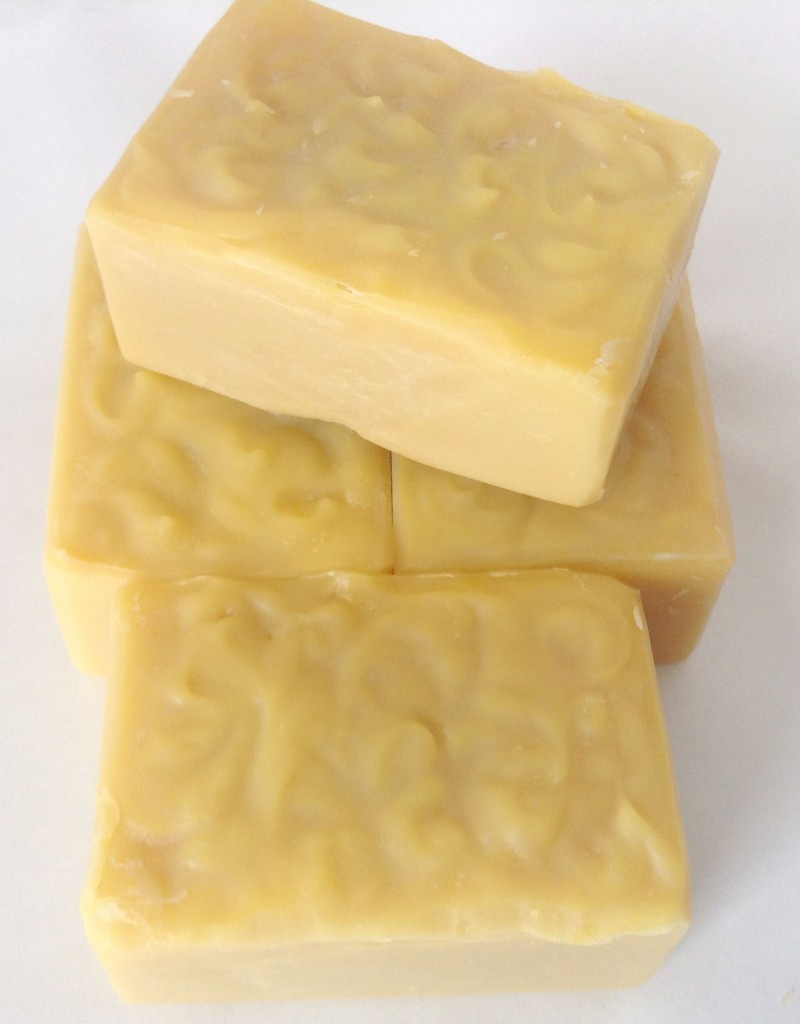 Carrot Buttermilk is a lovely facial soap. Carrots are rich in beta-carotene and Vitamin A and have antioxidant and soothing properties. Buttermilk has alpha-hydroxy acid, which helps rejuvenate skin with gentle exfoliation. Ingredients: olive oil, coconut oil, sustainable palm oil, water, sodium hydroxide, carrot purée, apricot kernel oil, castor oil, buttermilk, kaolin clay, tussah silk. Available September 21.
Carrot Buttermilk is a lovely facial soap. Carrots are rich in beta-carotene and Vitamin A and have antioxidant and soothing properties. Buttermilk has alpha-hydroxy acid, which helps rejuvenate skin with gentle exfoliation. Ingredients: olive oil, coconut oil, sustainable palm oil, water, sodium hydroxide, carrot purée, apricot kernel oil, castor oil, buttermilk, kaolin clay, tussah silk. Available September 21.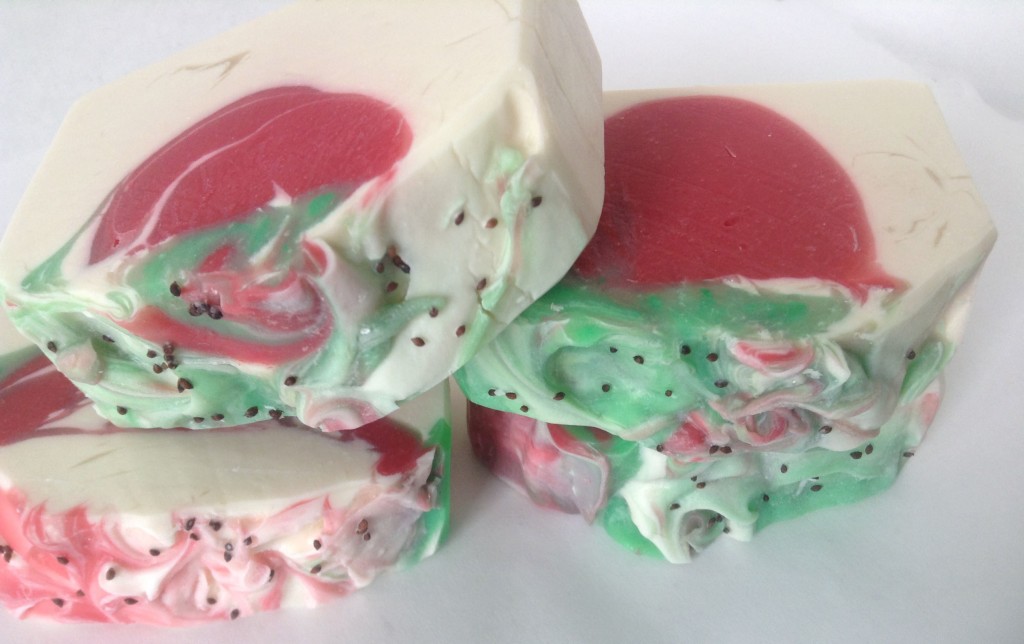 Johnny Appleseed, born John Chapman, was from nearby Leominster, MA, right here in Worcester County. This soap is named in honor of our native son, and it smells as delicious as the apples he helped spread across America—a crisp mix of red and green apples. Ingredients: olive oil, water, coconut oil, sustainable palm oil, sodium hydroxide, fragrance, shea butter, castor oil, cream, kaolin clay, colorants, cranberry seeds, tussah silk.
Johnny Appleseed, born John Chapman, was from nearby Leominster, MA, right here in Worcester County. This soap is named in honor of our native son, and it smells as delicious as the apples he helped spread across America—a crisp mix of red and green apples. Ingredients: olive oil, water, coconut oil, sustainable palm oil, sodium hydroxide, fragrance, shea butter, castor oil, cream, kaolin clay, colorants, cranberry seeds, tussah silk. 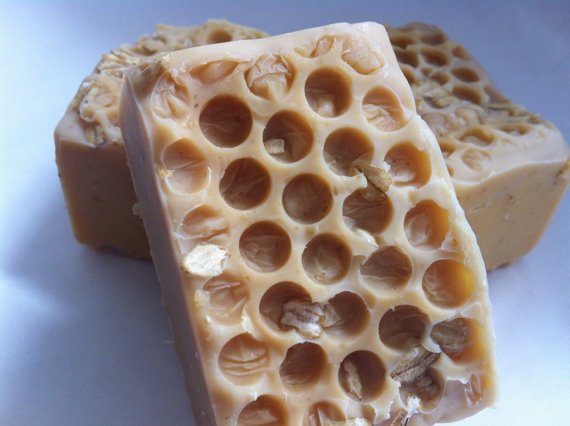 A great favorite, this soap is made with real raw local honey. I have a beekeeper friend who trades me her honey for soap! It’s also chock full of other great things for your skin, such as finely ground oatmeal and whole oats and goat milk. To top it off, it smells like grandma’s oatmeal cookies! This one will be a favorite with both men and women. Ingredients: olive oil, goat milk, coconut oil, sustainable palm oil, sodium hydroxide, shea butter, fragrance, castor oil, finely ground oatmeal, honey, whole oats.
A great favorite, this soap is made with real raw local honey. I have a beekeeper friend who trades me her honey for soap! It’s also chock full of other great things for your skin, such as finely ground oatmeal and whole oats and goat milk. To top it off, it smells like grandma’s oatmeal cookies! This one will be a favorite with both men and women. Ingredients: olive oil, goat milk, coconut oil, sustainable palm oil, sodium hydroxide, shea butter, fragrance, castor oil, finely ground oatmeal, honey, whole oats. 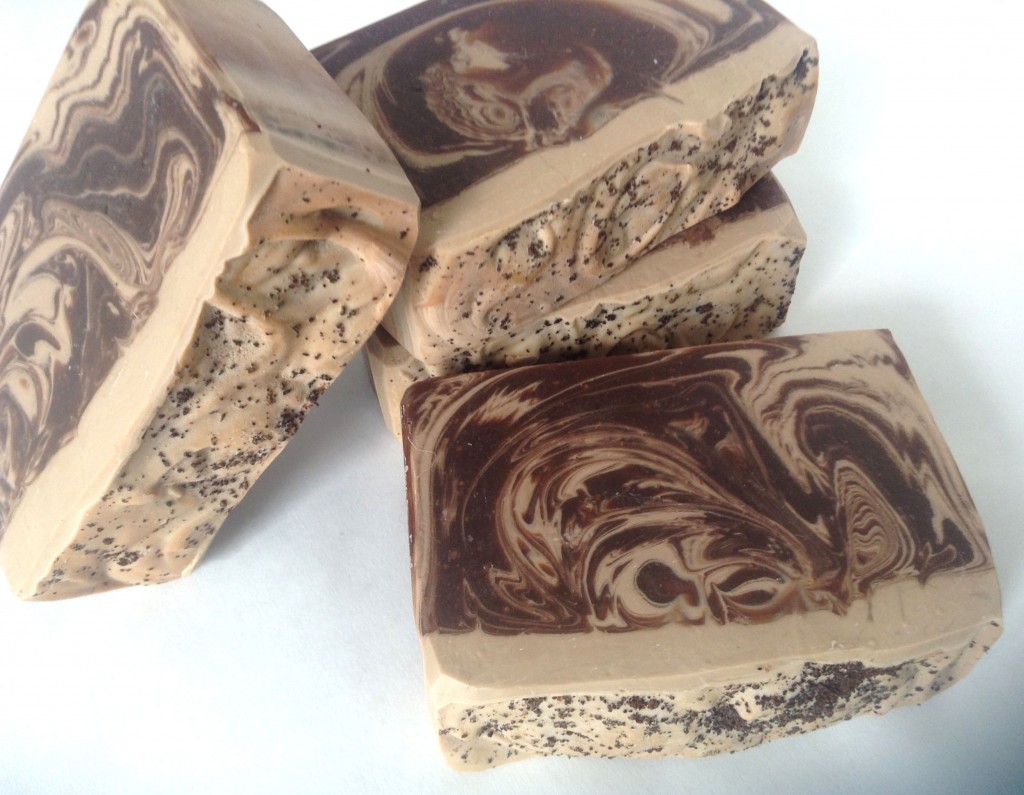 Coffee & Cream is made with a mix of invigorating coffee and rich cream and scented with a blend of coffee house coffee and Turkish mocha. Smooth and silky! Great for either men or women. Ingredients: olive oil, coffee, coconut oil, sodium hydroxide, sweet almond oil, cream, fragrance, cocoa butter, shea butter, castor oil, kaolin clay, colorant, tussah silk, coffee grounds.
Coffee & Cream is made with a mix of invigorating coffee and rich cream and scented with a blend of coffee house coffee and Turkish mocha. Smooth and silky! Great for either men or women. Ingredients: olive oil, coffee, coconut oil, sodium hydroxide, sweet almond oil, cream, fragrance, cocoa butter, shea butter, castor oil, kaolin clay, colorant, tussah silk, coffee grounds.  Pumpkin Pie is a fall favorite. Made with genuine New England One Pie® pumpkin and scented with a heavenly pumpkin pie fragrance, you don’t want to miss this one. Just like pumpkin spice lattes, they only appear once a year. Ingredients: olive oil, coconut oil, sustainable palm oil, One-Pie® Pumpkin, water, sodium hydroxide, shea butter, fragrance, castor oil, cream, sweet almond oil, colorant, pumpkin pie spice. Available September 14.
Pumpkin Pie is a fall favorite. Made with genuine New England One Pie® pumpkin and scented with a heavenly pumpkin pie fragrance, you don’t want to miss this one. Just like pumpkin spice lattes, they only appear once a year. Ingredients: olive oil, coconut oil, sustainable palm oil, One-Pie® Pumpkin, water, sodium hydroxide, shea butter, fragrance, castor oil, cream, sweet almond oil, colorant, pumpkin pie spice. Available September 14.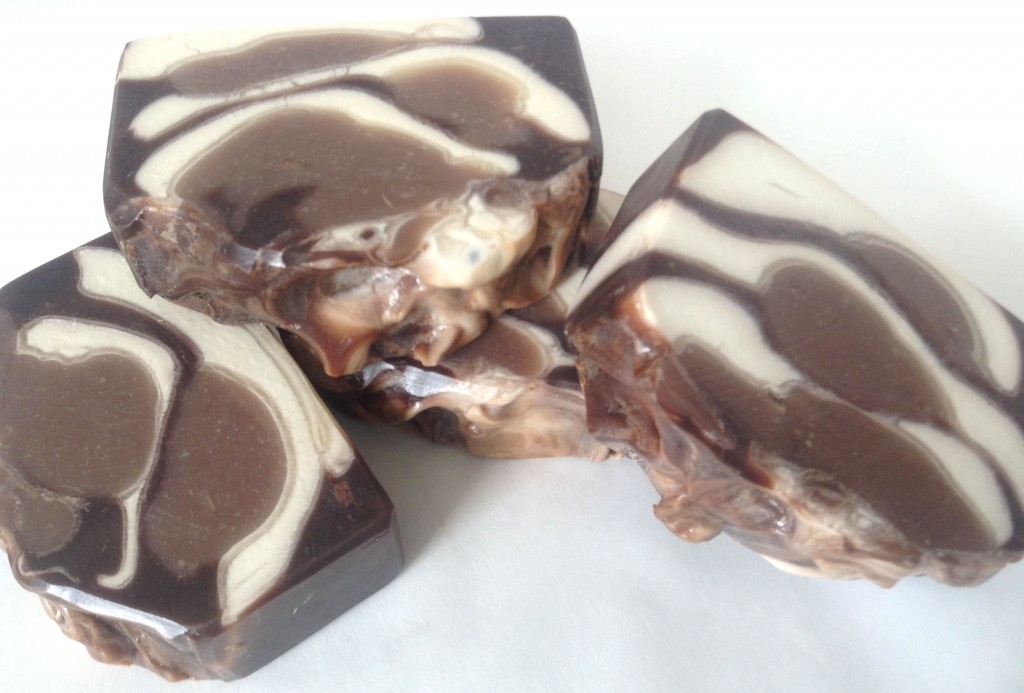 Vanilla Chai Latte is nice combination of warm vanilla and spices like cinnamon and clove. A wonderful fall treat! Another nice fragrance for either men or women. Ingredients: olive oil, water, coconut oil, sustainable palm oil, fragrance, cream, shea butter, castor oil, kaolin clay, colorant, tussah silk. Available September 28.
Vanilla Chai Latte is nice combination of warm vanilla and spices like cinnamon and clove. A wonderful fall treat! Another nice fragrance for either men or women. Ingredients: olive oil, water, coconut oil, sustainable palm oil, fragrance, cream, shea butter, castor oil, kaolin clay, colorant, tussah silk. Available September 28.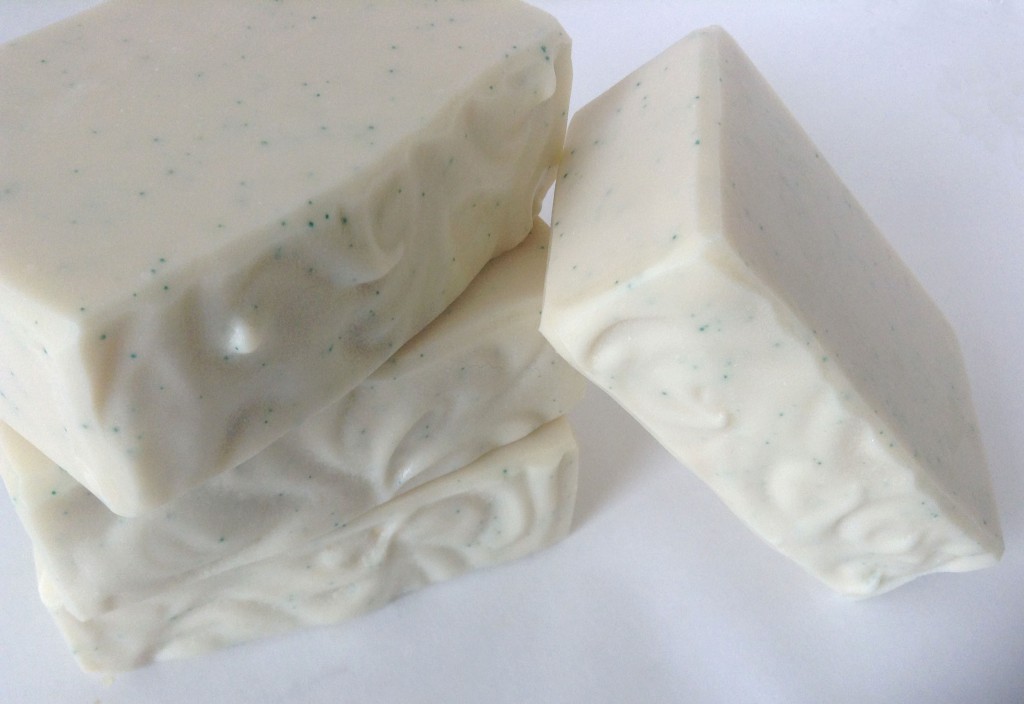
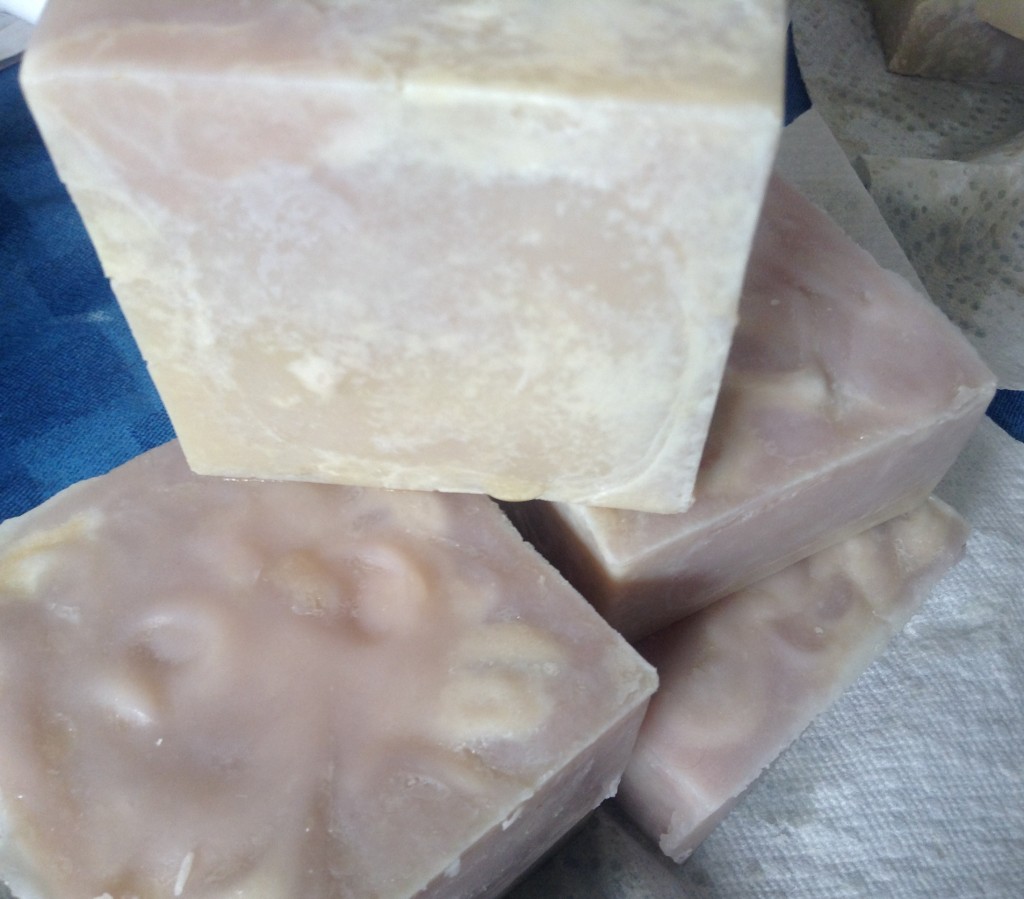 I unmolded these beauties this morning. This soap was supposed to be a really nice lavender goat milk soap. I’m not happy that I used some nice materials with this result, but it does happen.
I unmolded these beauties this morning. This soap was supposed to be a really nice lavender goat milk soap. I’m not happy that I used some nice materials with this result, but it does happen.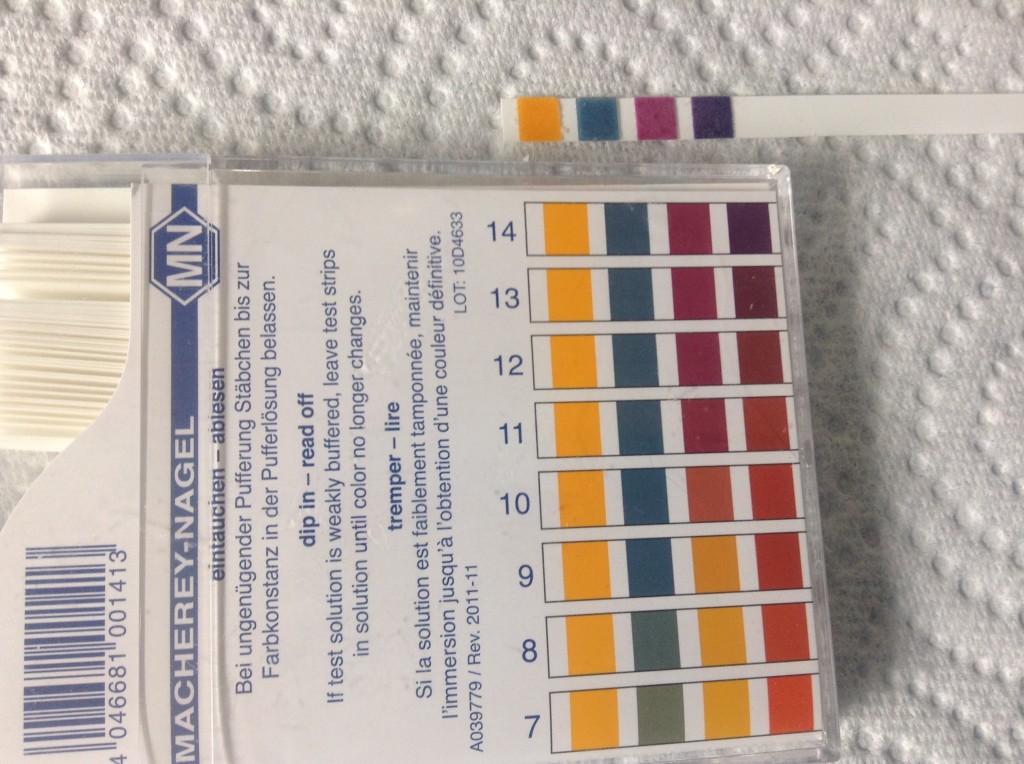 If you haven’t used these kinds of test strips before, you might not be familiar with how to read them. Essentially, you hold the strip up to the scale on the package above and compare it to the different sets of colors. I think my test strip looks most like the set labeled 14. If you are not familiar with the pH scale, it works like this:
If you haven’t used these kinds of test strips before, you might not be familiar with how to read them. Essentially, you hold the strip up to the scale on the package above and compare it to the different sets of colors. I think my test strip looks most like the set labeled 14. If you are not familiar with the pH scale, it works like this: Ingredients
Ingredients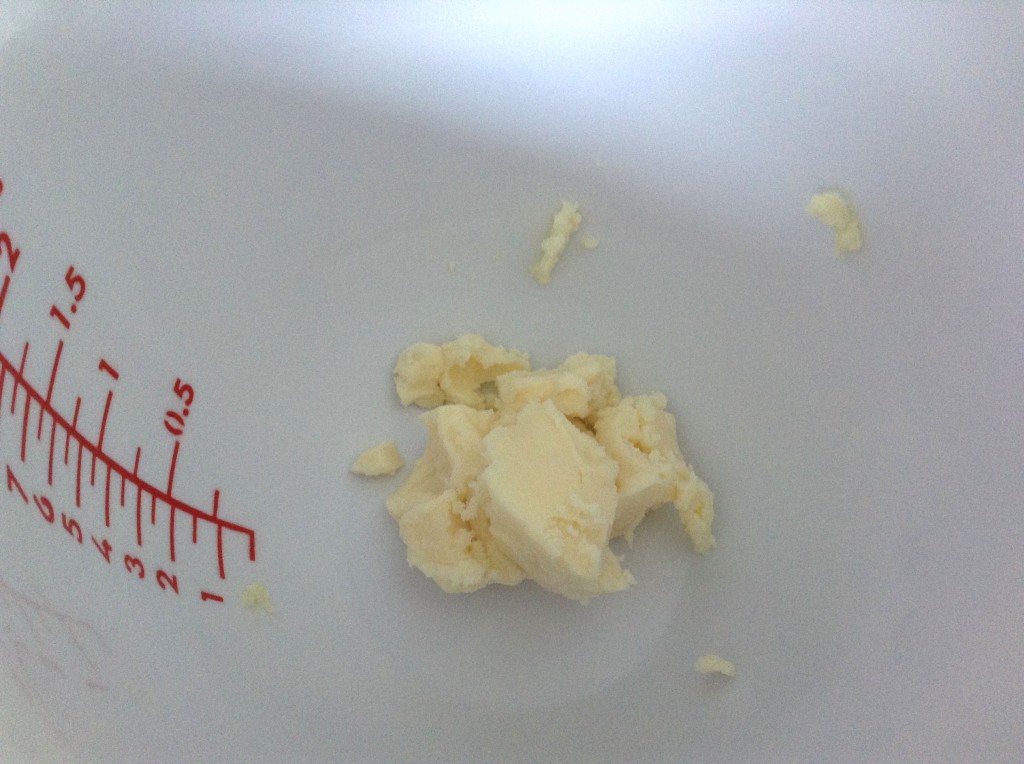 Mango butter is truly wonderful. It is similar to shea butter in some respects in that it has a significant amount of unsaponifiables, meaning that more of the conditioning and moisturizing qualities of the butter make it through the saponification process. It also contributes to a creamy lather.
Mango butter is truly wonderful. It is similar to shea butter in some respects in that it has a significant amount of unsaponifiables, meaning that more of the conditioning and moisturizing qualities of the butter make it through the saponification process. It also contributes to a creamy lather.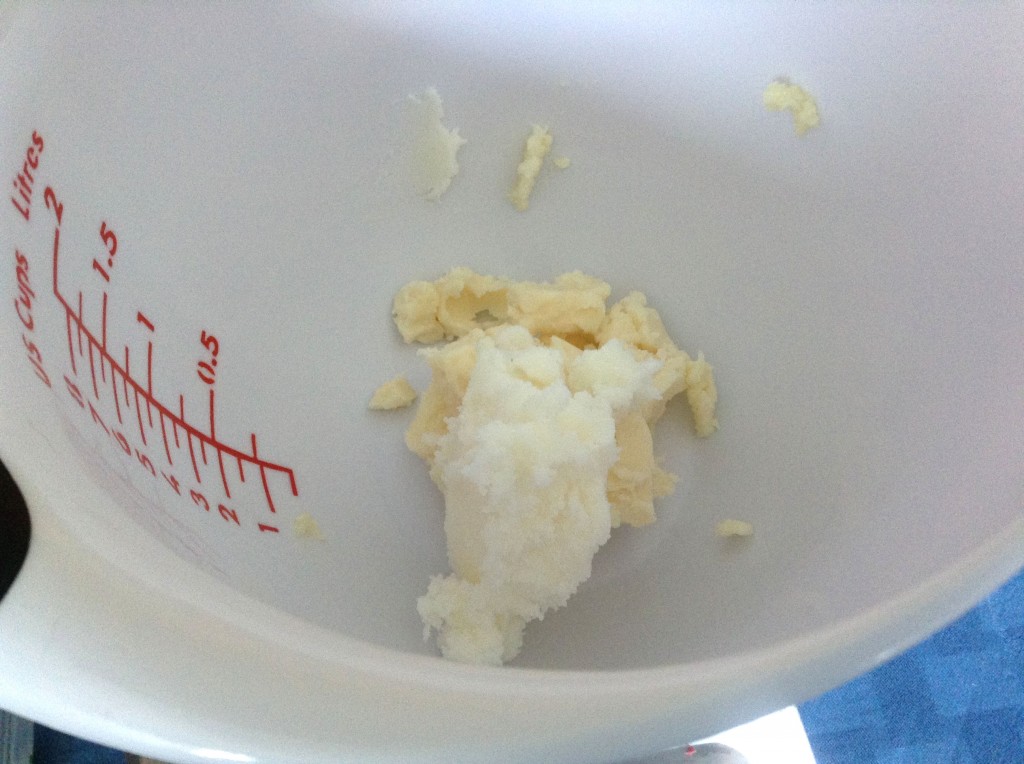 I added the shea butter to the mango butter. I use shea butter and/or cocoa butter in almost all of my soaps because I love what it does for skin. It does speed up trace, so be careful.
I added the shea butter to the mango butter. I use shea butter and/or cocoa butter in almost all of my soaps because I love what it does for skin. It does speed up trace, so be careful.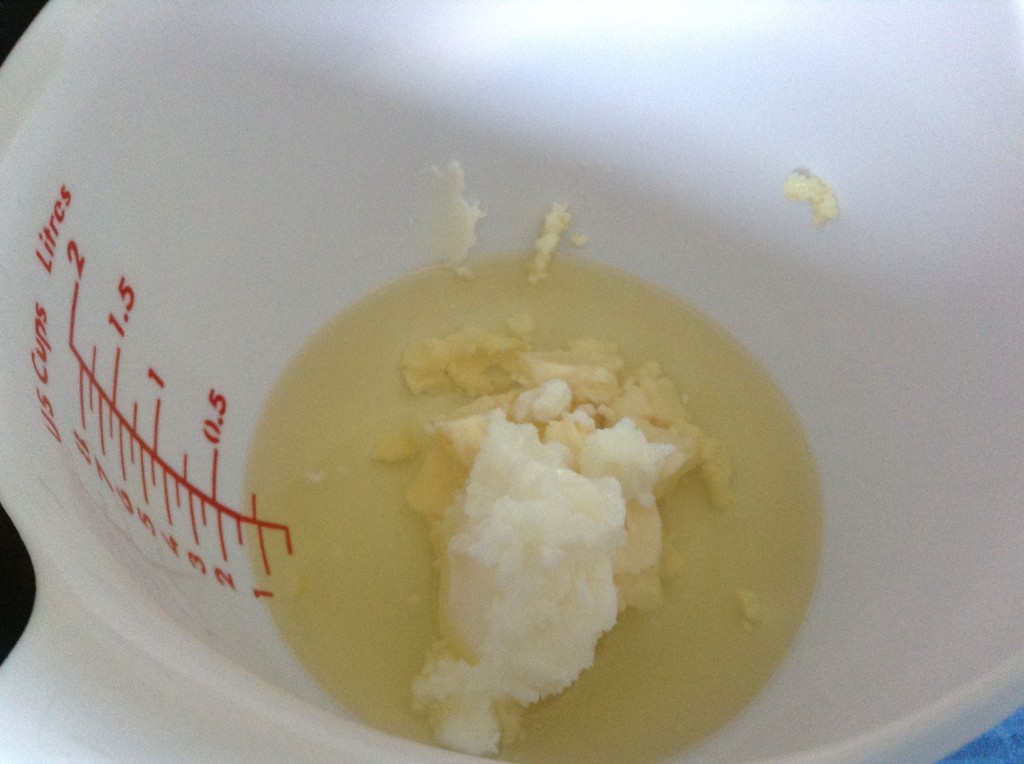 In with the coconut oil. It’s so hot here today that it’s completely melted already. Actually the mango butter was kind of soft as well. It’s usually a little harder (and almost brittle) than it was today. Coconut oil is great for bubbles—it contributes to fluffy lather and cleansing as well as bar hardness. I use coconut oil in almost all of my soaps.
In with the coconut oil. It’s so hot here today that it’s completely melted already. Actually the mango butter was kind of soft as well. It’s usually a little harder (and almost brittle) than it was today. Coconut oil is great for bubbles—it contributes to fluffy lather and cleansing as well as bar hardness. I use coconut oil in almost all of my soaps.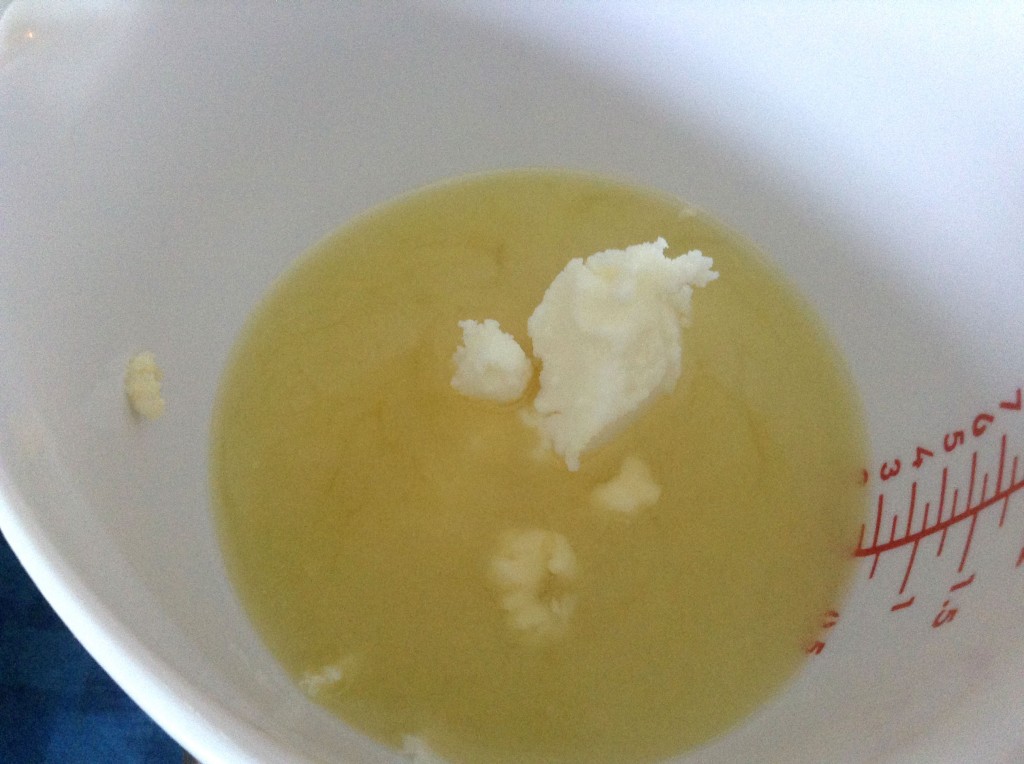 The last hard oil is palm oil, which I use because it contributes to bar hardness, stable lather, and conditioning. I use it in a lot of my soaps.
The last hard oil is palm oil, which I use because it contributes to bar hardness, stable lather, and conditioning. I use it in a lot of my soaps.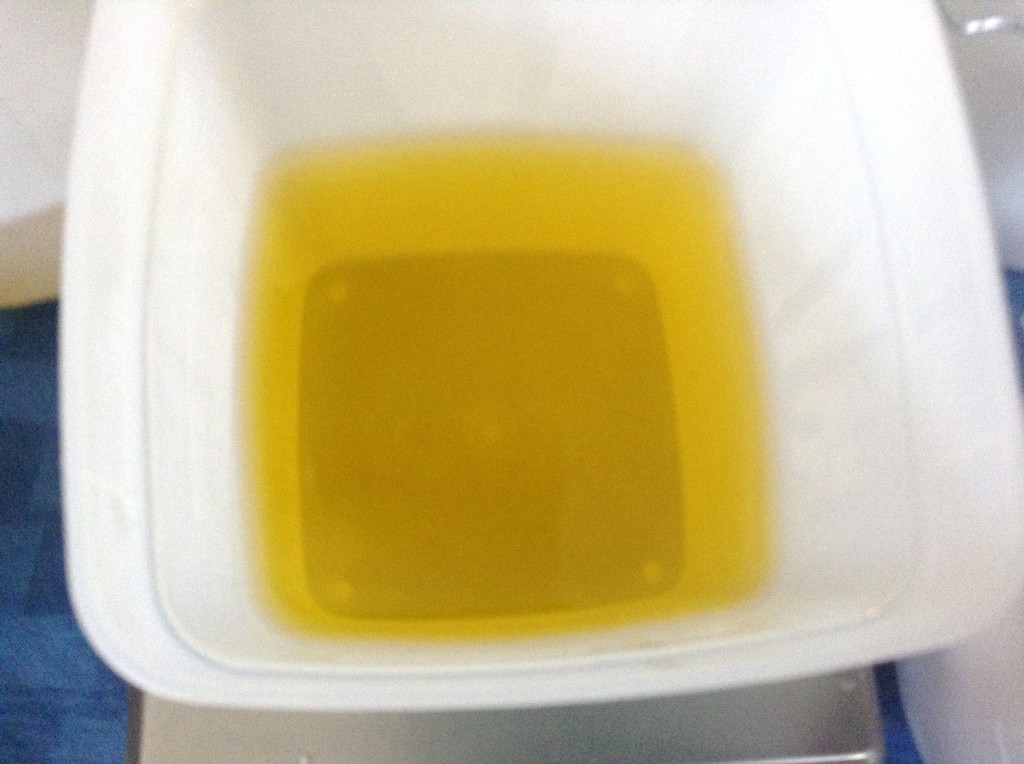 A quick word about olive oil: you can use any grade of olive oil in soap, but I always use pure golden olive oil. I don’t think it’s necessary to use extra virgin olive oil in soapmaking. In fact, it’s not different enough from pure golden olive oil to warrant its own category in SoapCalc, though olive oil pomace is. I personally don’t use pomace because pure golden olive oil is available at my local discount membership warehouse for a really good price (and no shipping). I use olive oil in every single soap I make. It’s highly conditioning and contributes to stable lather and bar hardness. I believe it to be the single best soaping oil there is.
A quick word about olive oil: you can use any grade of olive oil in soap, but I always use pure golden olive oil. I don’t think it’s necessary to use extra virgin olive oil in soapmaking. In fact, it’s not different enough from pure golden olive oil to warrant its own category in SoapCalc, though olive oil pomace is. I personally don’t use pomace because pure golden olive oil is available at my local discount membership warehouse for a really good price (and no shipping). I use olive oil in every single soap I make. It’s highly conditioning and contributes to stable lather and bar hardness. I believe it to be the single best soaping oil there is.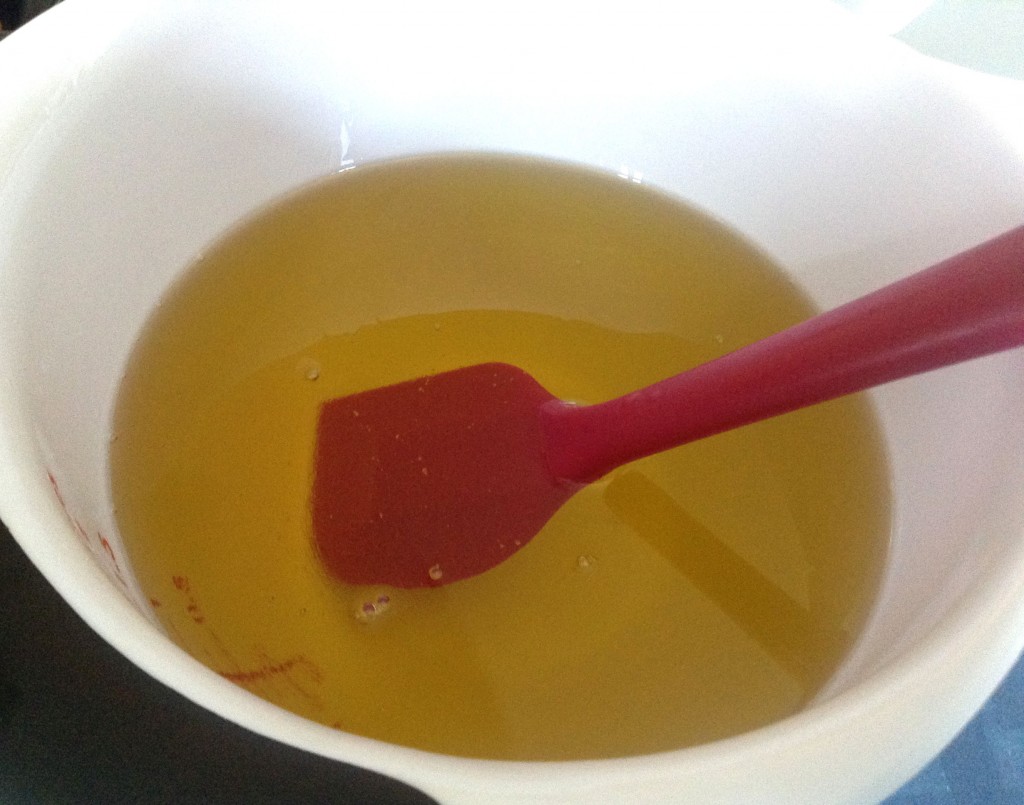
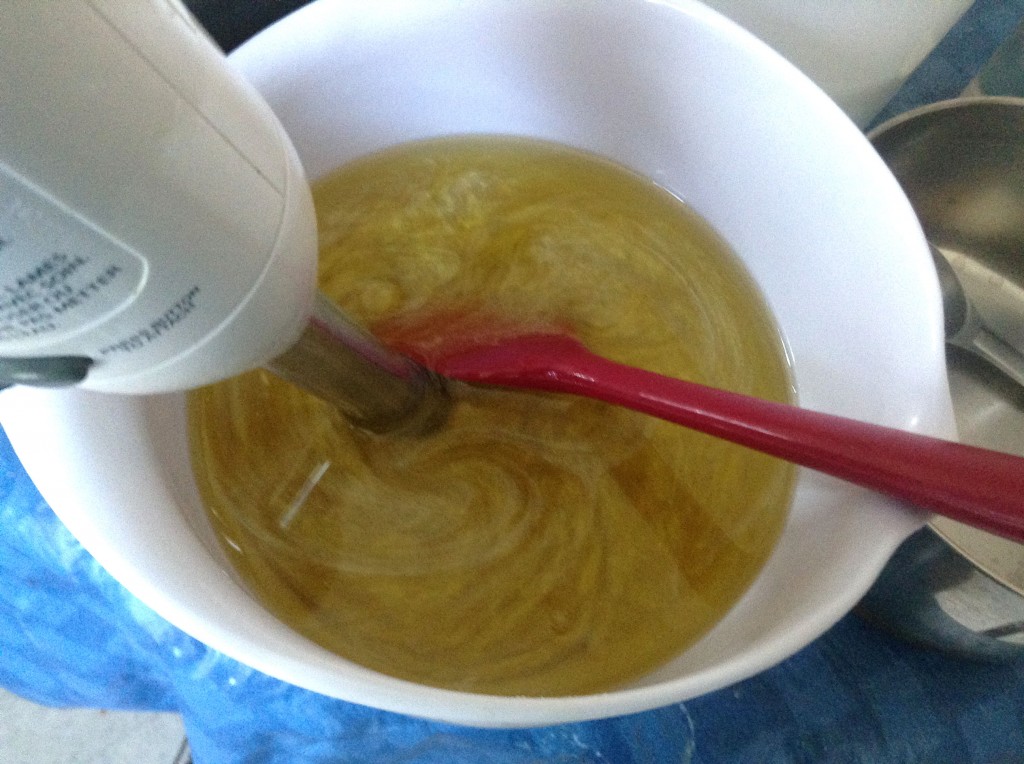
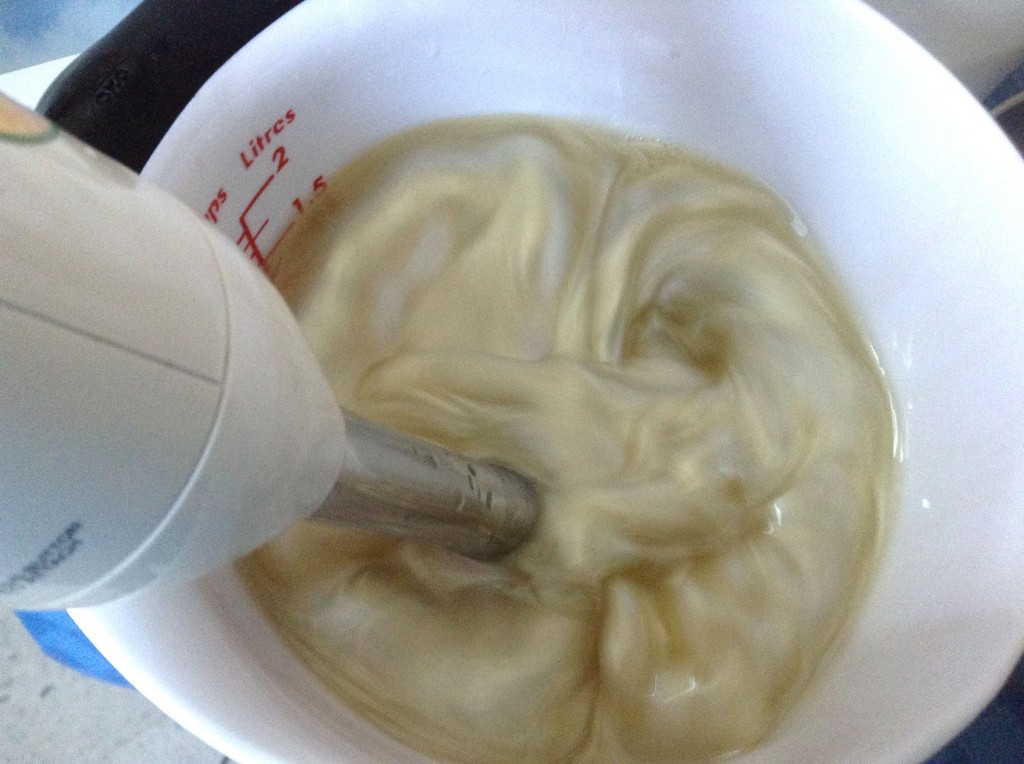
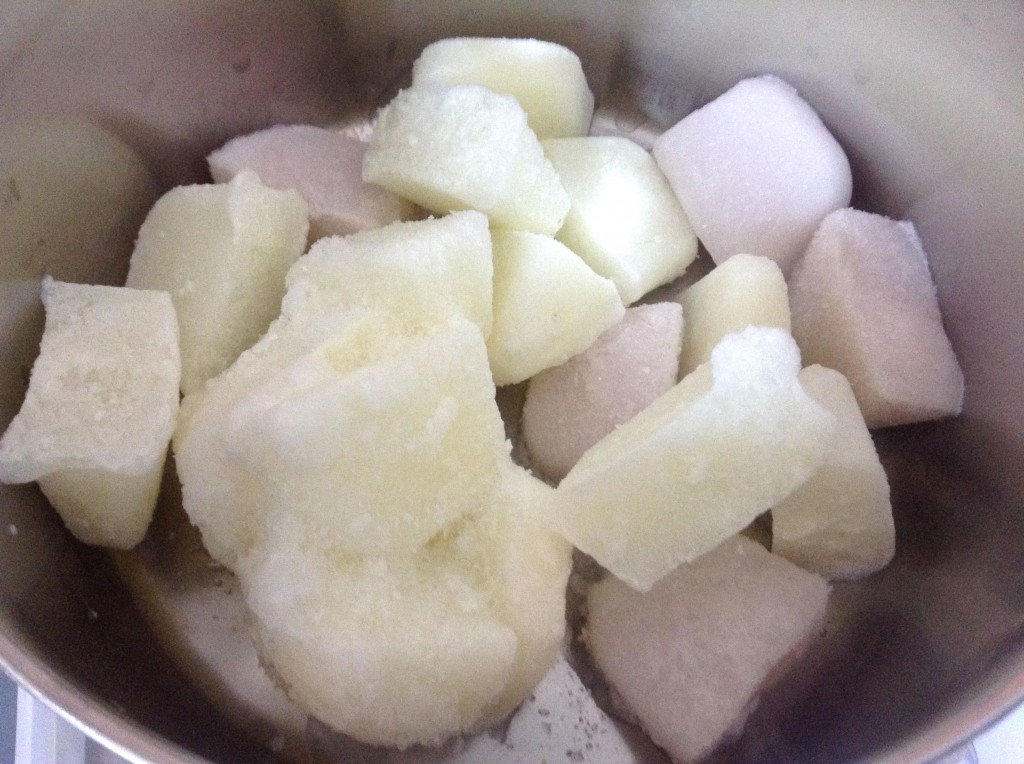
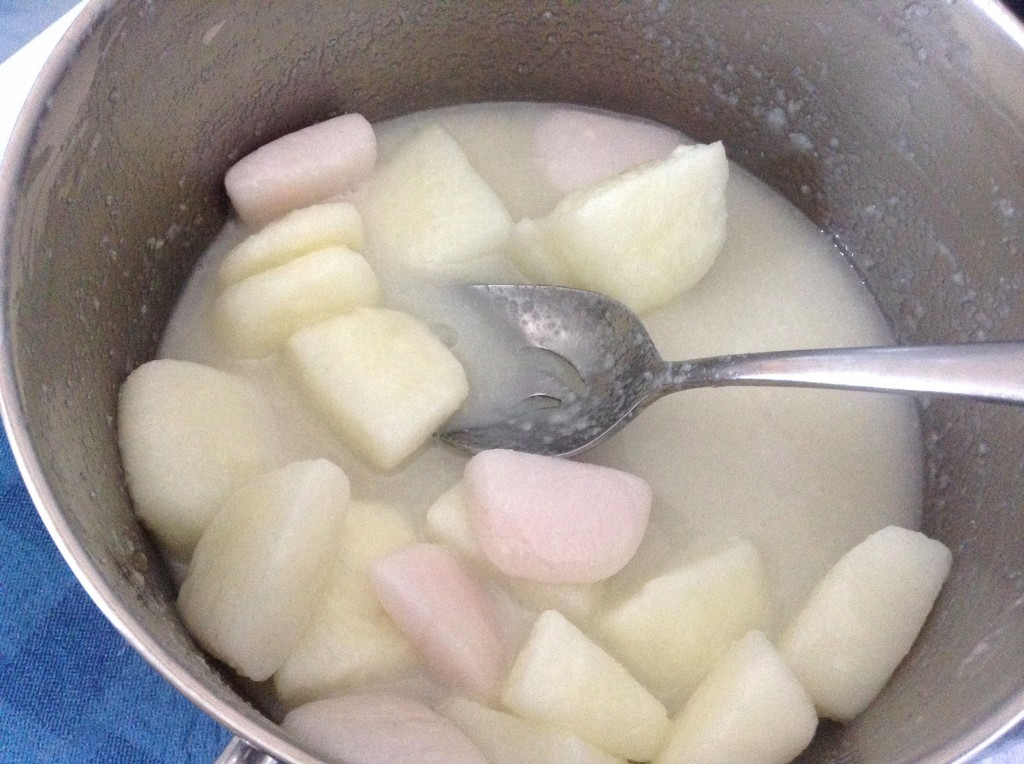 Working with milk requires a bit more effort than working with water. I use a stainless steel pot because if I need to quickly cool it down the mixture, stainless steel is a better conductor (hot or cold) than plastic or glass. I also add the lye to the milk just a little at a time and stir until the lye is dissolved. Then I add more. It can take a little while. Once all the lye was added, and I was relatively sure the all of it had dissolved in the milk, I added the sodium lactate to the lye mixture and stirred well to dissolve it.
Working with milk requires a bit more effort than working with water. I use a stainless steel pot because if I need to quickly cool it down the mixture, stainless steel is a better conductor (hot or cold) than plastic or glass. I also add the lye to the milk just a little at a time and stir until the lye is dissolved. Then I add more. It can take a little while. Once all the lye was added, and I was relatively sure the all of it had dissolved in the milk, I added the sodium lactate to the lye mixture and stirred well to dissolve it. I checked the temperature of the lye mixture, and it was about 82°F. Pretty good. I don’t like it to rise above 90°F. If it starts to become too warm, I put the pan in a cool water bath to bring the temperature down.
I checked the temperature of the lye mixture, and it was about 82°F. Pretty good. I don’t like it to rise above 90°F. If it starts to become too warm, I put the pan in a cool water bath to bring the temperature down.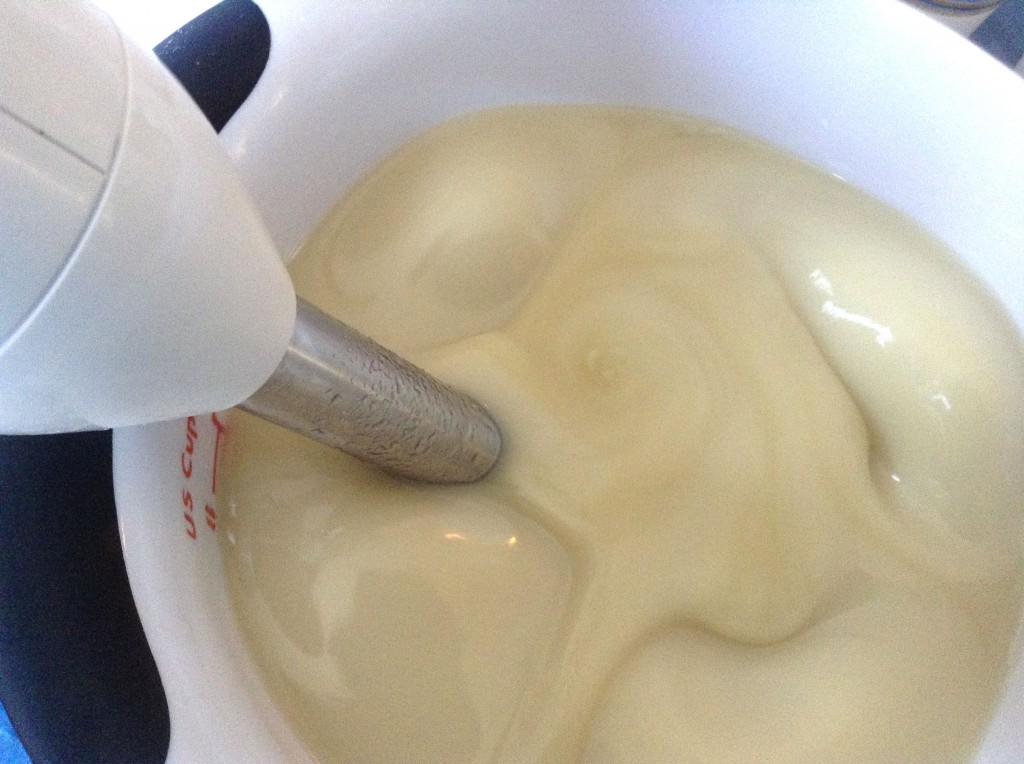 I stick blended until a very light trace, then I added the honey. Honey will accelerate trace, so make sure you add it at a light trace, or you may find you have gone too far with the stick blending. When I use honey in soap, I mix it with an equal amount of distilled water. In this case, I used 1.5 t of honey, so I mixed it with 1.5 t of water. Then I microwave the honey for a very short time—only 5-10 seconds. I stir until it dissolves in the water. I find that I have fewer issues with scorching, overheating, and
I stick blended until a very light trace, then I added the honey. Honey will accelerate trace, so make sure you add it at a light trace, or you may find you have gone too far with the stick blending. When I use honey in soap, I mix it with an equal amount of distilled water. In this case, I used 1.5 t of honey, so I mixed it with 1.5 t of water. Then I microwave the honey for a very short time—only 5-10 seconds. I stir until it dissolves in the water. I find that I have fewer issues with scorching, overheating, and 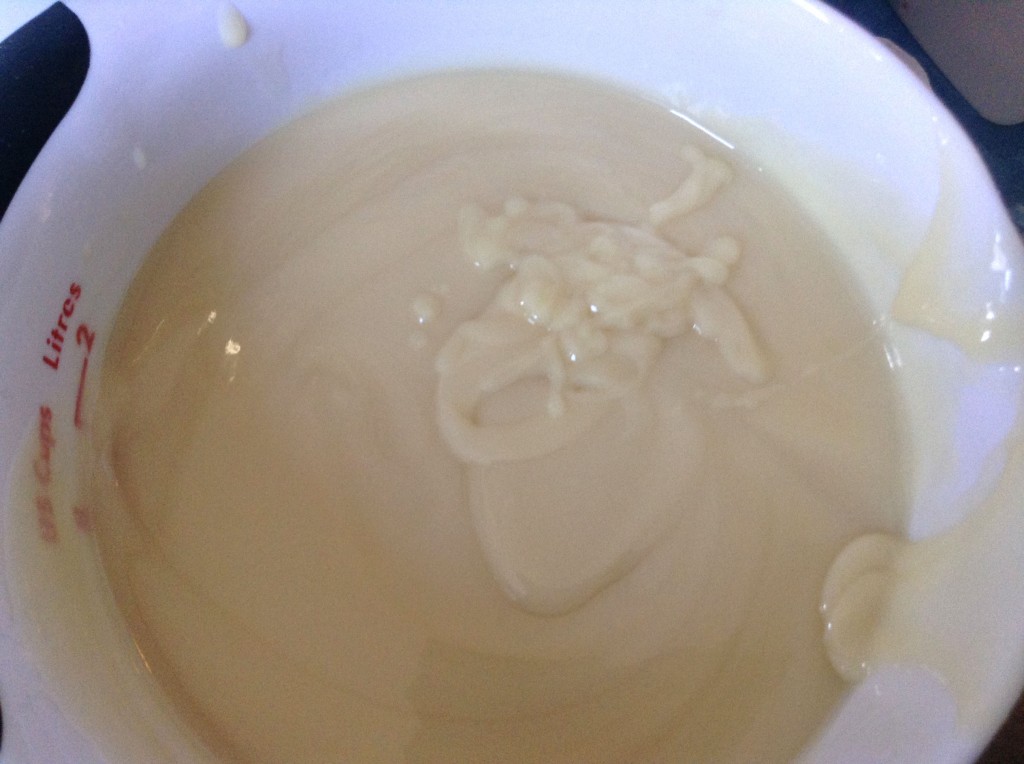 I blended to a pretty thick trace, then poured the soap into my 10-inch silicone loaf mold, which was the perfect size for this recipe. Bramble Berry recommends using sodium lactate to make it easier to remove soap from this mold, and in any case, sodium lactate adds a nice silky feel to soap.
I blended to a pretty thick trace, then poured the soap into my 10-inch silicone loaf mold, which was the perfect size for this recipe. Bramble Berry recommends using sodium lactate to make it easier to remove soap from this mold, and in any case, sodium lactate adds a nice silky feel to soap.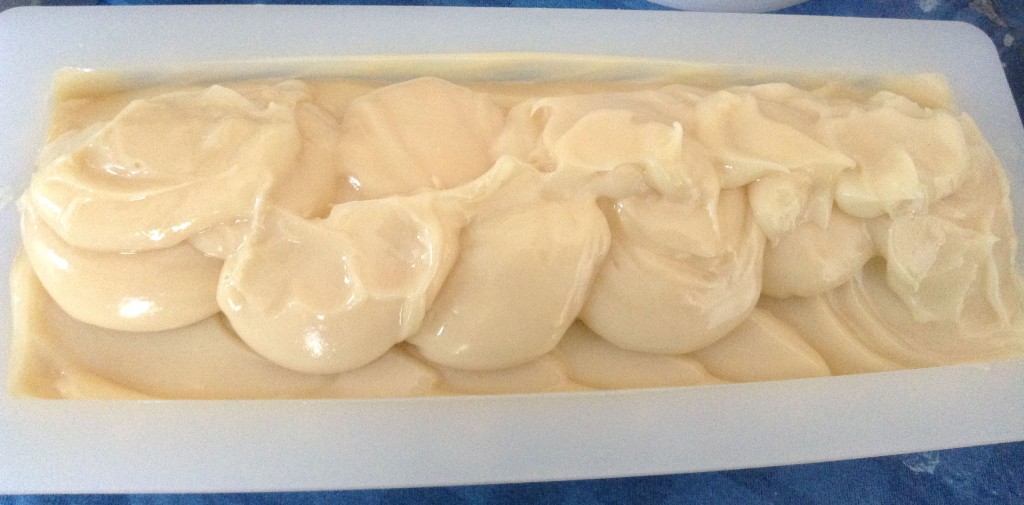 Like Cee, I spooned soap on the top after doing a little bit of sculpting, but I didn’t think my tops were as pretty as hers, so I experimented a bit with a skewer to create a slightly different design.
Like Cee, I spooned soap on the top after doing a little bit of sculpting, but I didn’t think my tops were as pretty as hers, so I experimented a bit with a skewer to create a slightly different design.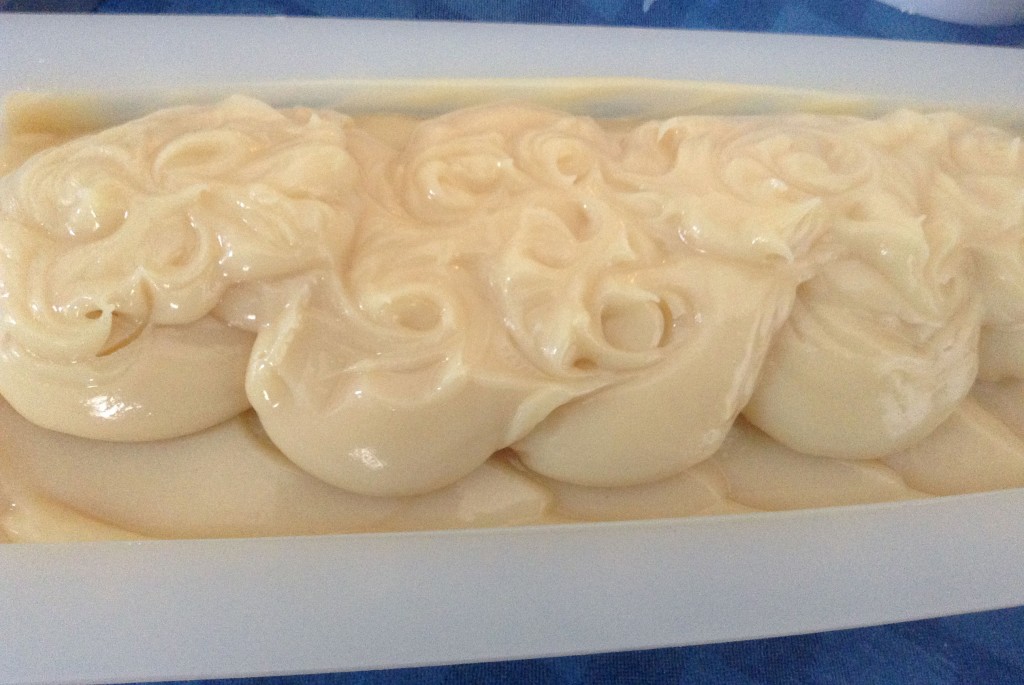 I spritzed it with 91% isopropyl alcohol, which might not have been strictly necessary since I didn’t choose to gel the soap, but it can’t hurt anyway. Isopropyl alcohol can help prevent soda ash on the tops of soap, but it’s not 100% effective.
I spritzed it with 91% isopropyl alcohol, which might not have been strictly necessary since I didn’t choose to gel the soap, but it can’t hurt anyway. Isopropyl alcohol can help prevent soda ash on the tops of soap, but it’s not 100% effective.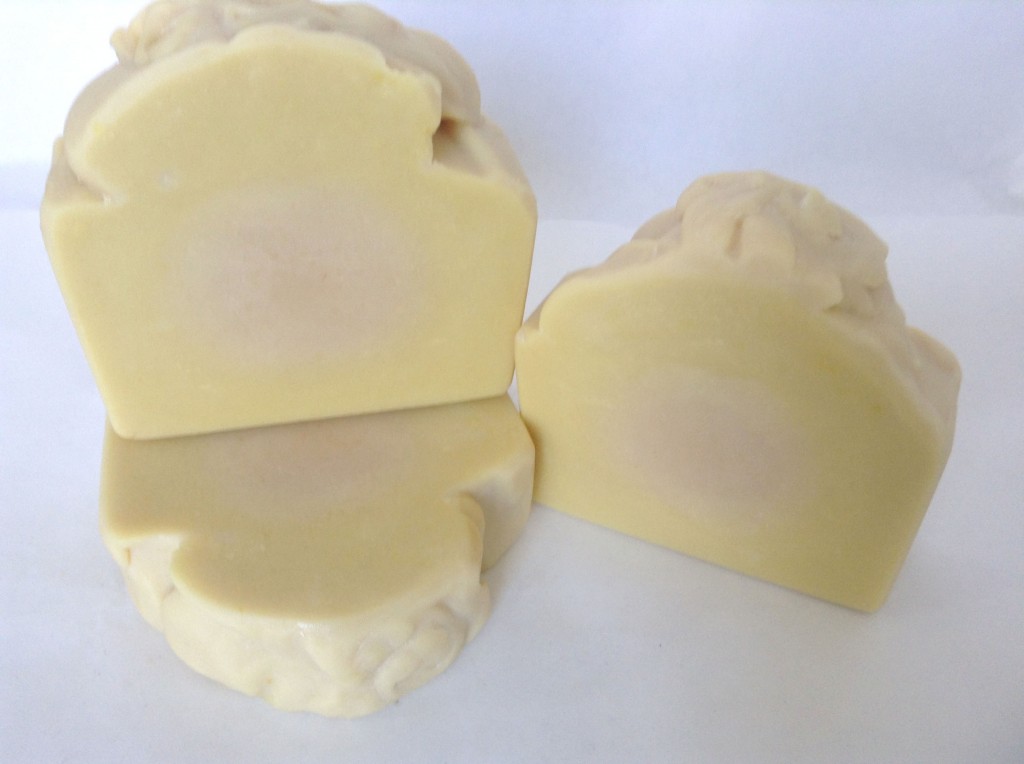 The cut soaps smell wonderful. I am going to let them have a nice long cure and give them to family and friends for Christmas.
The cut soaps smell wonderful. I am going to let them have a nice long cure and give them to family and friends for Christmas.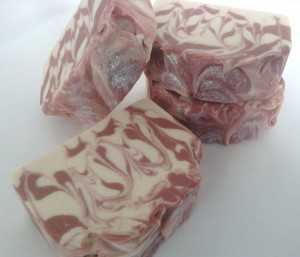 Woo! It’s time to celebrate because the
Woo! It’s time to celebrate because the 

